
Battered Japan
Three days after a massive earthquake and the ensuing tsunami hit Japan’s east coast, the sufferers are faced with the challenge of survival.
Section:Picture story
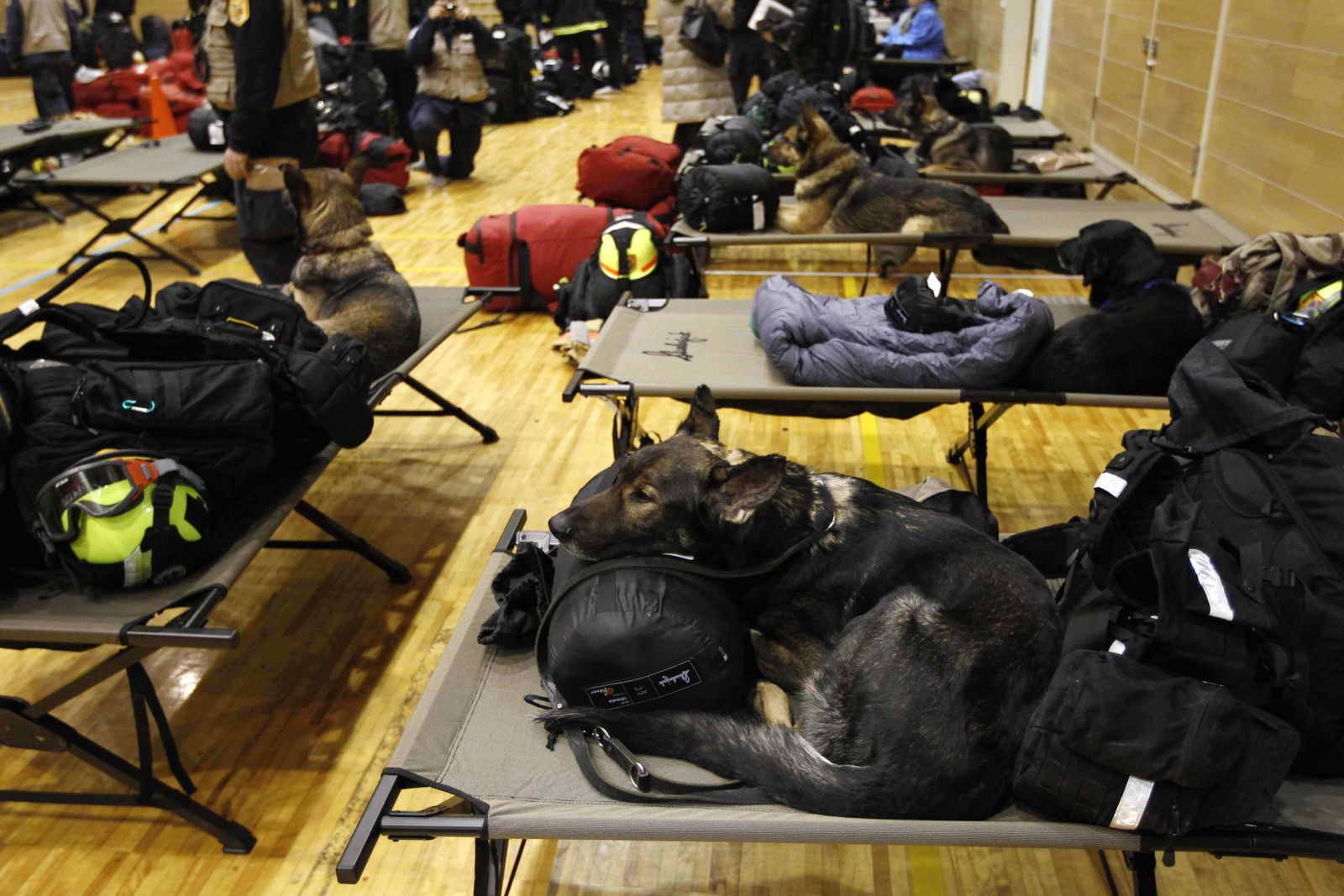
U.S. search and rescue dogs sit on cots set up by U.S. and British rescue teams to bed in for the night in a gymnasium after arriving at the Setamai school in Sumita, northern Japan, Monday, March 14, 2011. Two search and rescue teams from Fairfax County, Virginia, and Los Angeles County in the U.S. and a team from the U.K. with combined numbers of around 225 personnel have arrived in northern Japan to help in the aftermath of the earthquake and tsunami.
Matt Dunham Associated Press
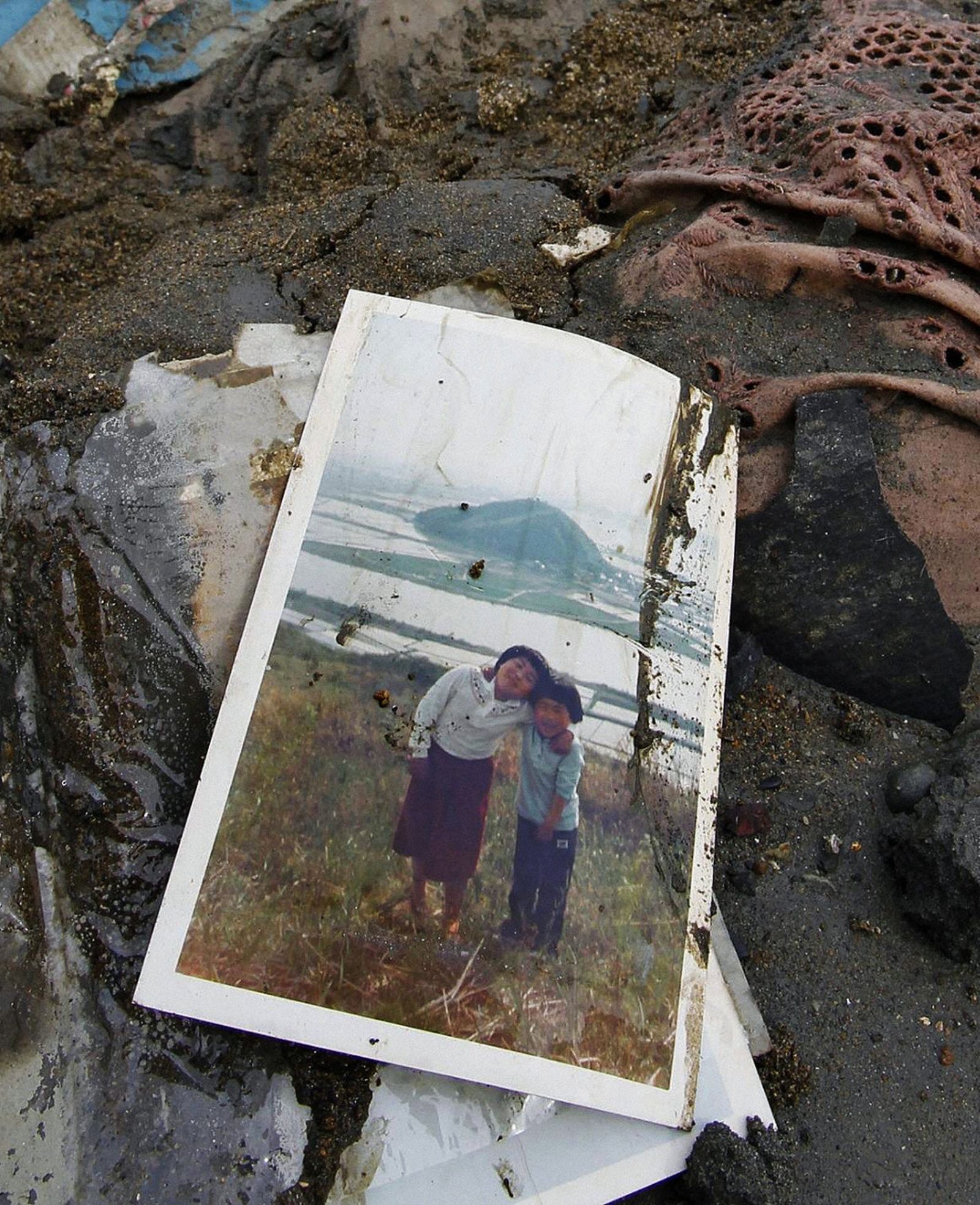
A family picture lies among the rubble in Higashimatsushima, Miyagi Prefecture, northern Japan, Monday, March 14, 2011, three days after a massive earthquake and the ensuing tsunami hit Japan’s east coast.
Kyodo News Associated Press
Associated Press
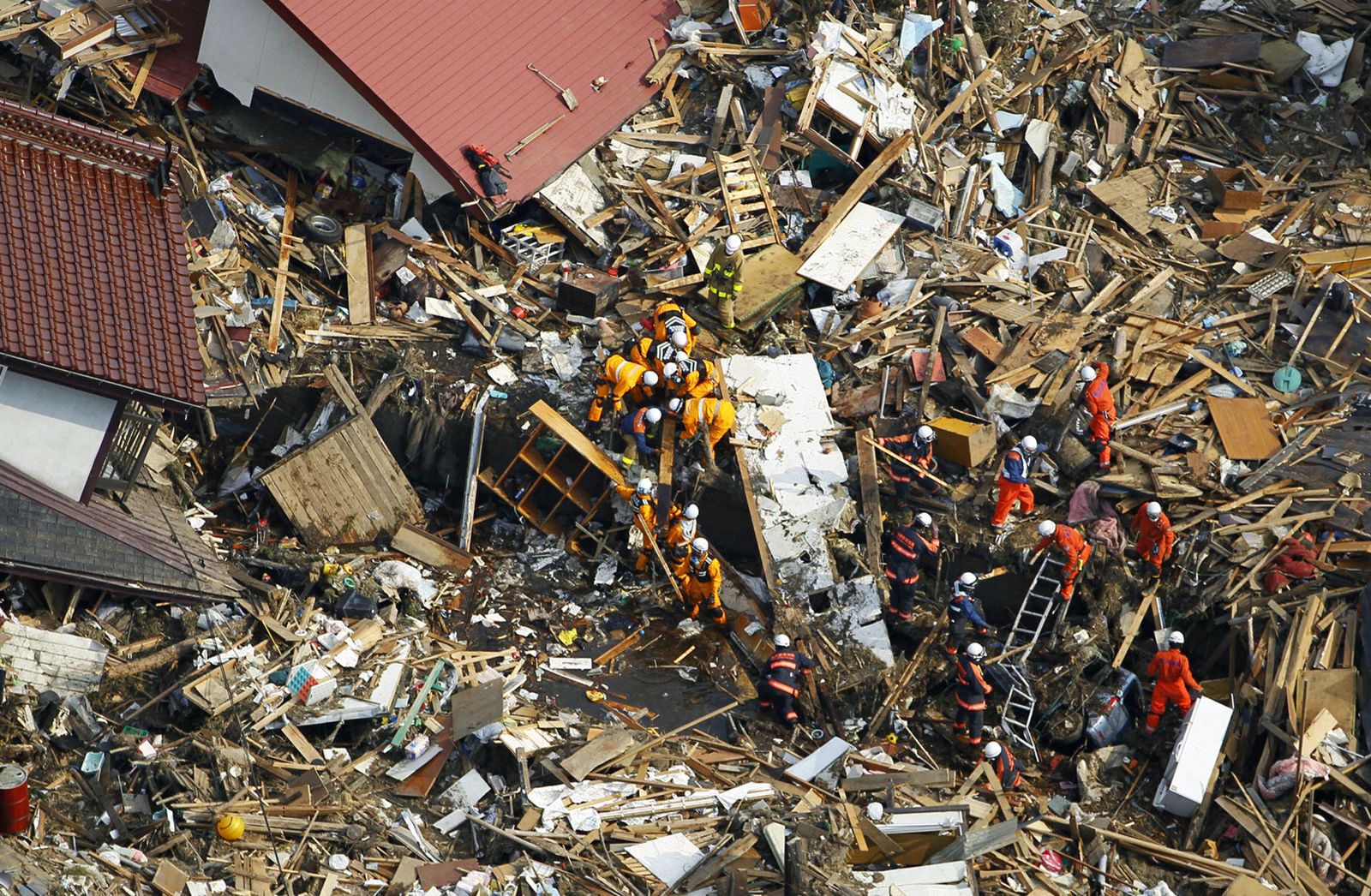
Rescuers searches for the victims of Friday’s tsunami at Noda village, Iwate Prefecture, northern Japan, Monday, March 14, 2011, three days after a massive earthquake and the ensuing tsunami hit the country’s east coast.
Kyodo News Associated Press
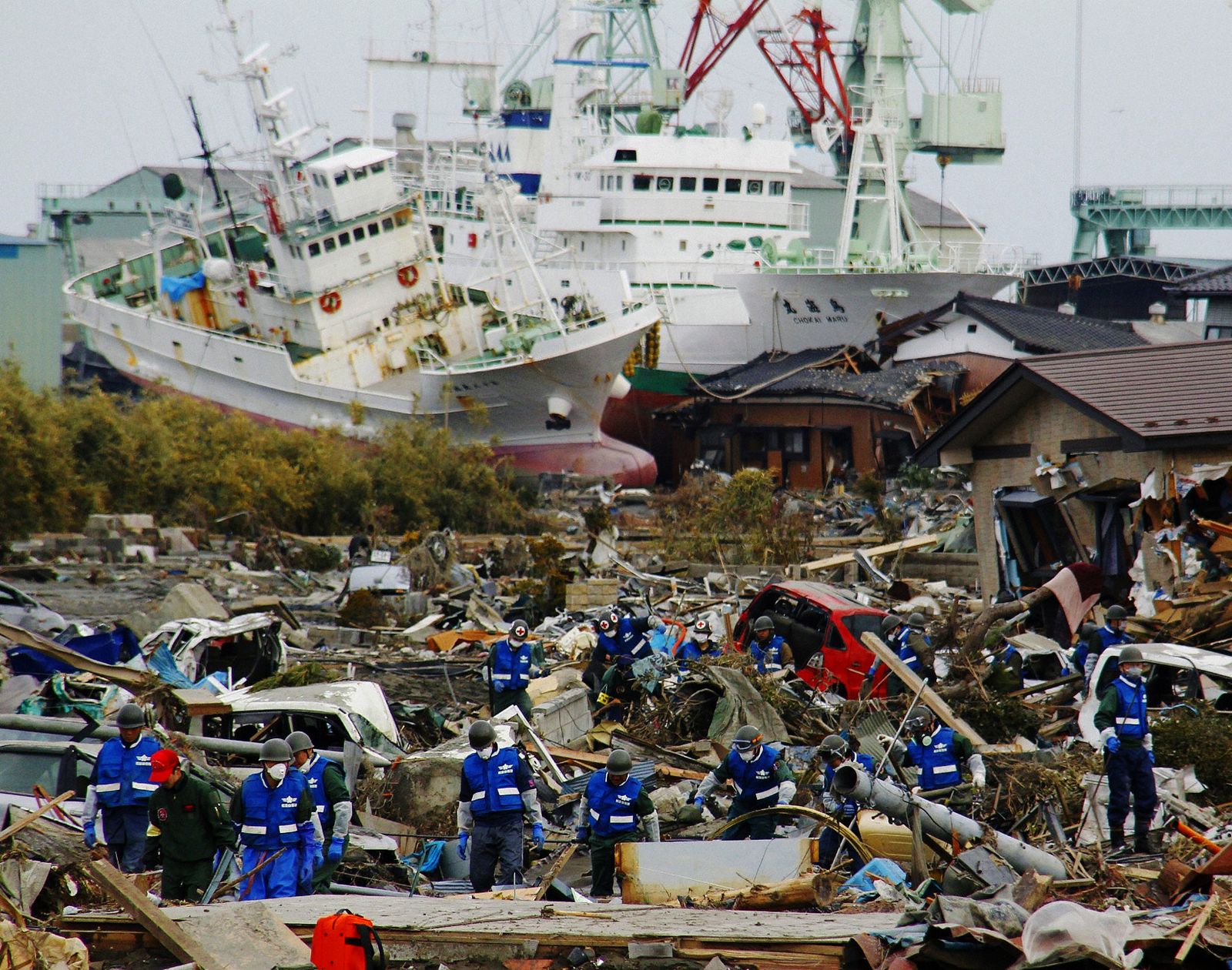
Japan Ground Self-Defense Force members search for the victims of Friday’s tsunami in Miyako, Iwate Prefecture, northern Japan, Monday, March 14, 2011, three days after a massive earthquake and the ensuing tsunami hit the country’s east coast.
Kyodo News Associated Press
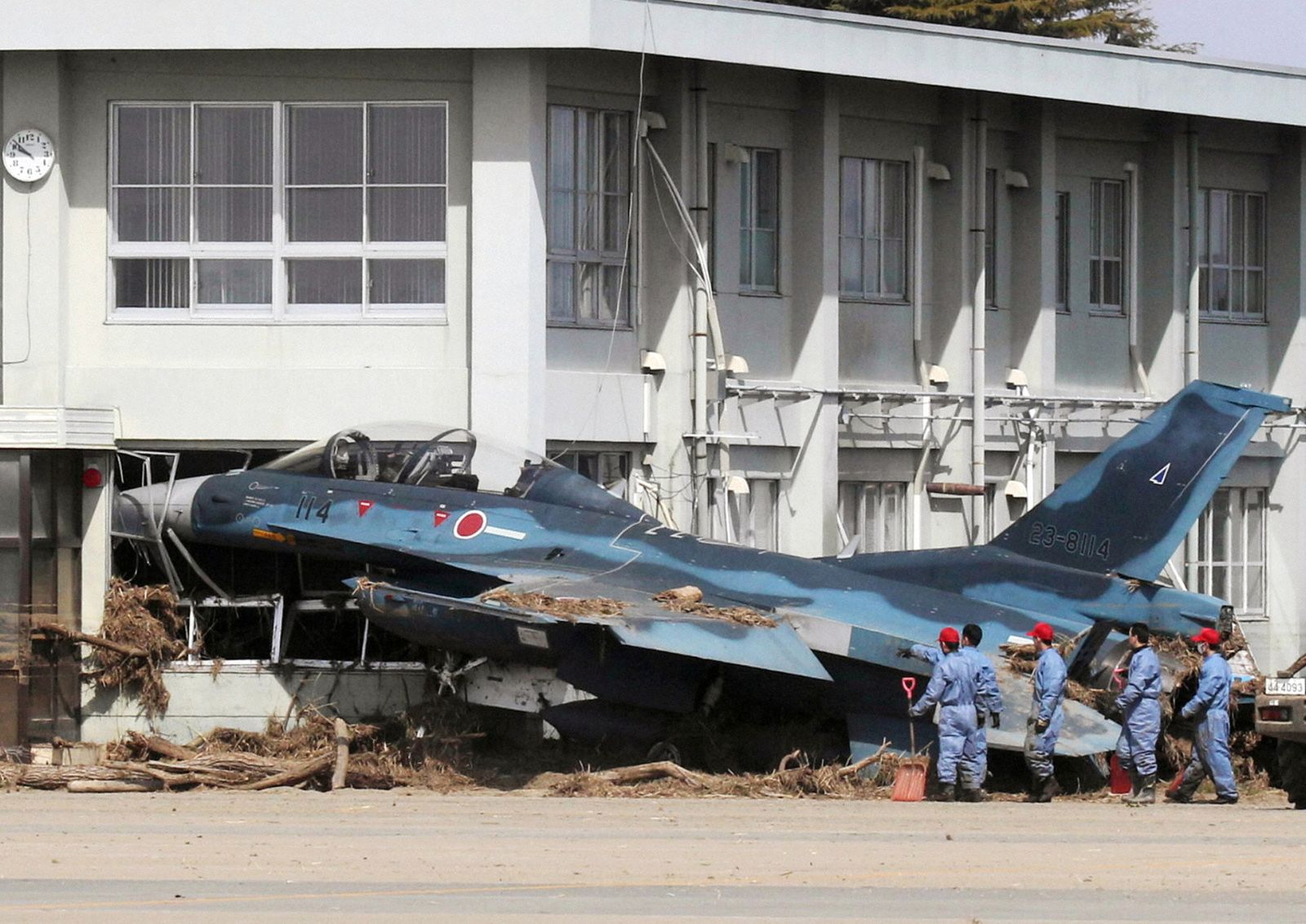
Officers inspect Japan Air Self-Defense Force’s Mitsubishi F-2 which was swept out by Friday’s tsunami into a building at Matsushima base in Higashimatsushima, Iwate Prefecture, northern Japan, Monday, March 14, 2011, three days after a massive earthquake and the ensuing tsunami hit the country’s east coast.
Kyodo News Associated Press
Associated Press
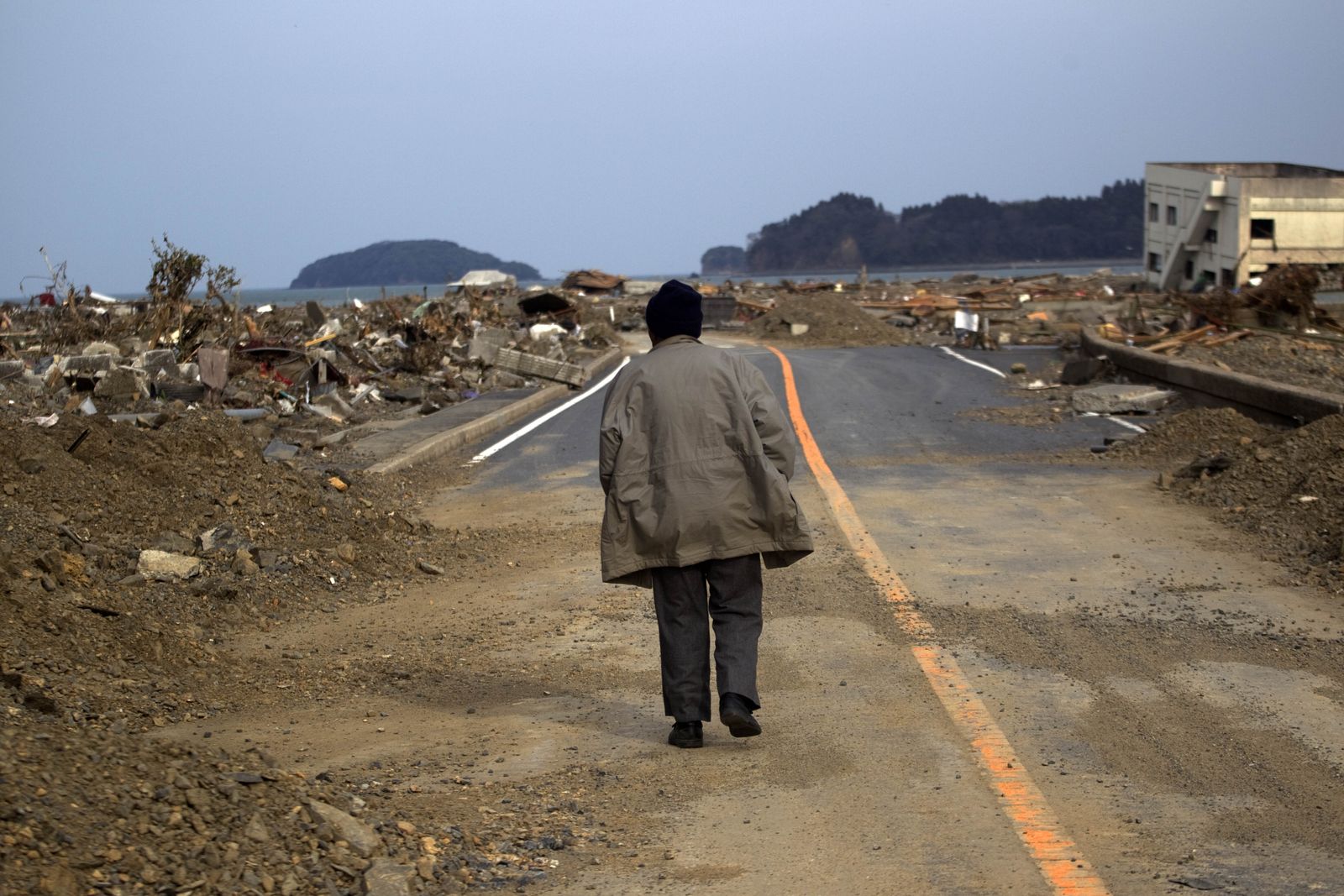
A Japanese earthquake and tsunami survivor walks alone on a road past the destroyed village of Saito, in northeastern Japan, Monday, March 14, 2011.
David Guttenfelder Associated Press
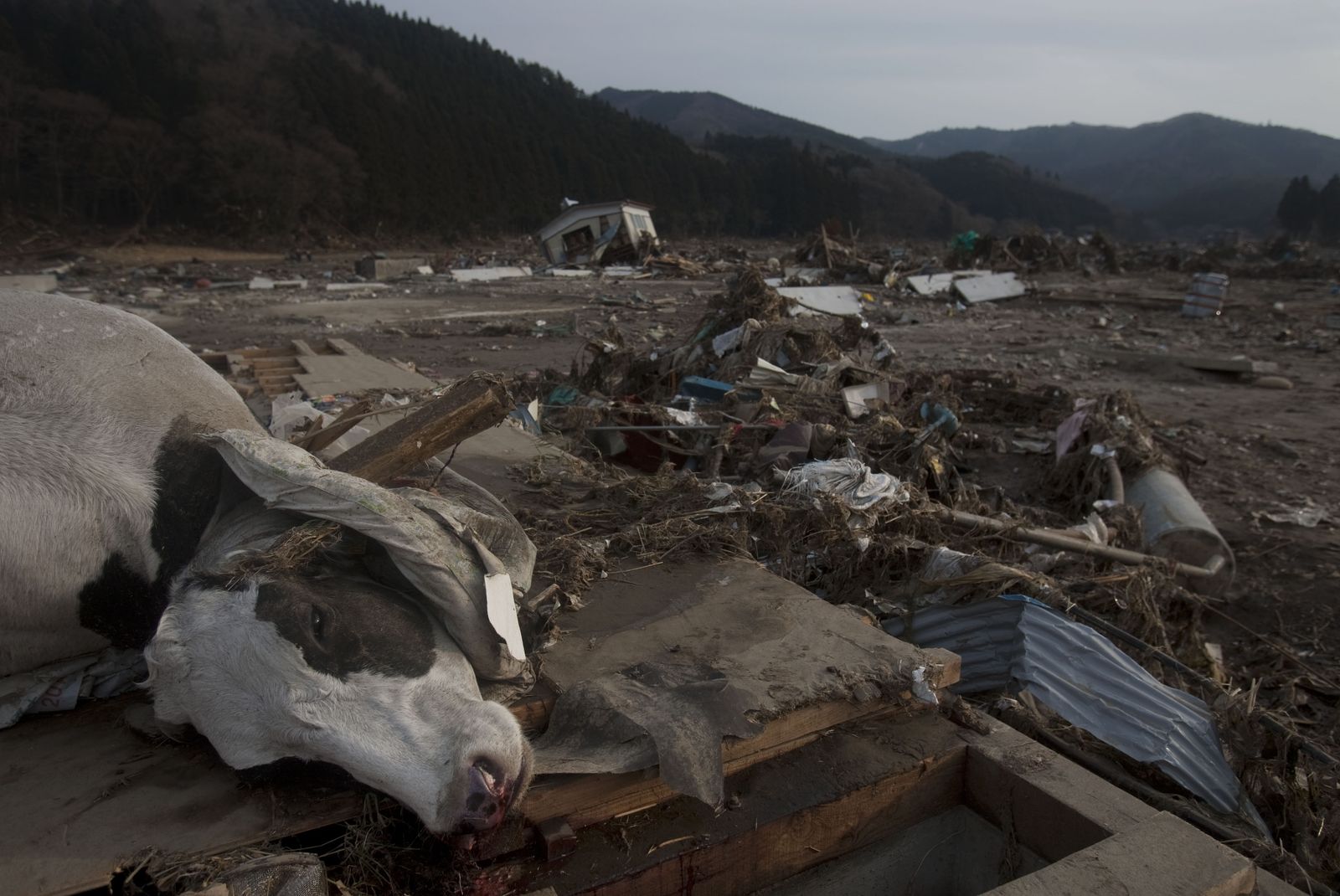
A cow and debris is scattered at the site of the destroyed village of Saito, in northeastern Japan, Monday, March 14, 2011.
David Guttenfelder Associated Press
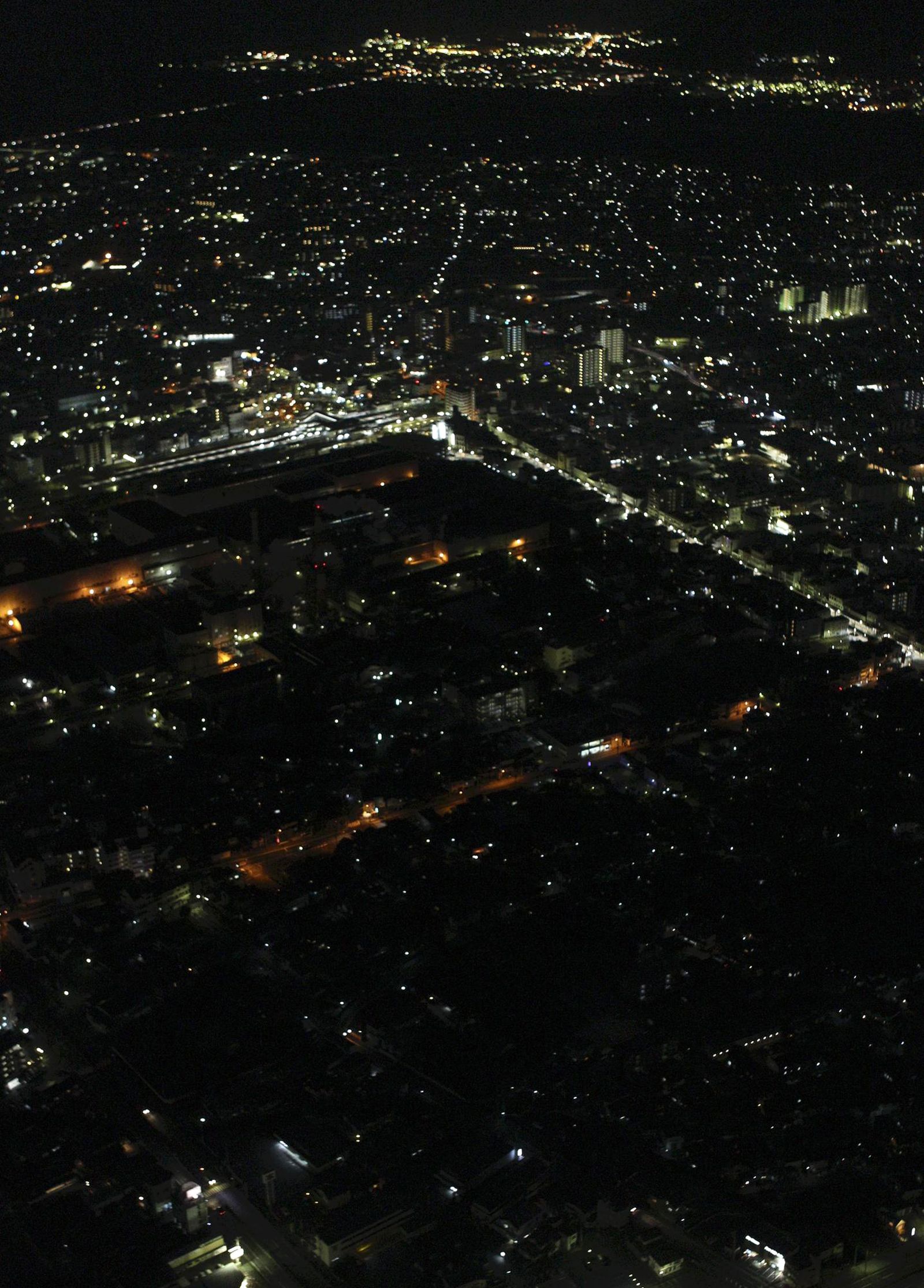
An aerial view shows a residential area during planned outage in Fuji city, Shizuoka Prefecture, Japan, Monday, March 14, 2011. The planned blackouts were meant to help make up for a severe shortfall after key nuclear plants were left inoperable due to Friday’s earthquake and tsunami.
The Yomiuri Shimbun, Kenichi Unaki Associated Press
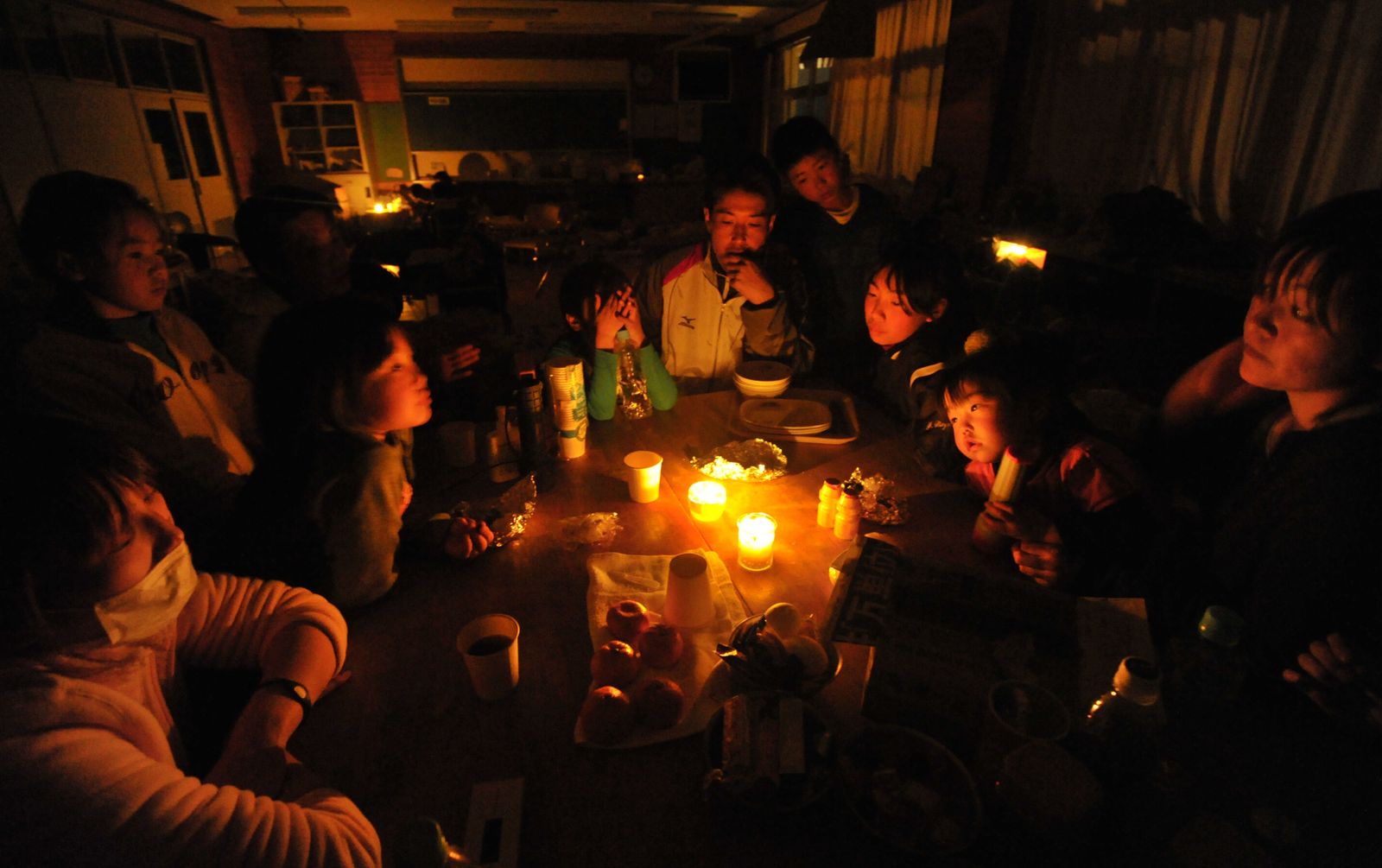
Evacuees gather around the candlelight at a blacked out shelter Monday, March 14, 2011, in Yamamoto, Miyagi Prefecture, northern Japan, Monday, March 14, 2011, three days after northeastern coastal towns were devastated by an earthquake and tsunami.
Kyodo News Associated Press
Associated Press
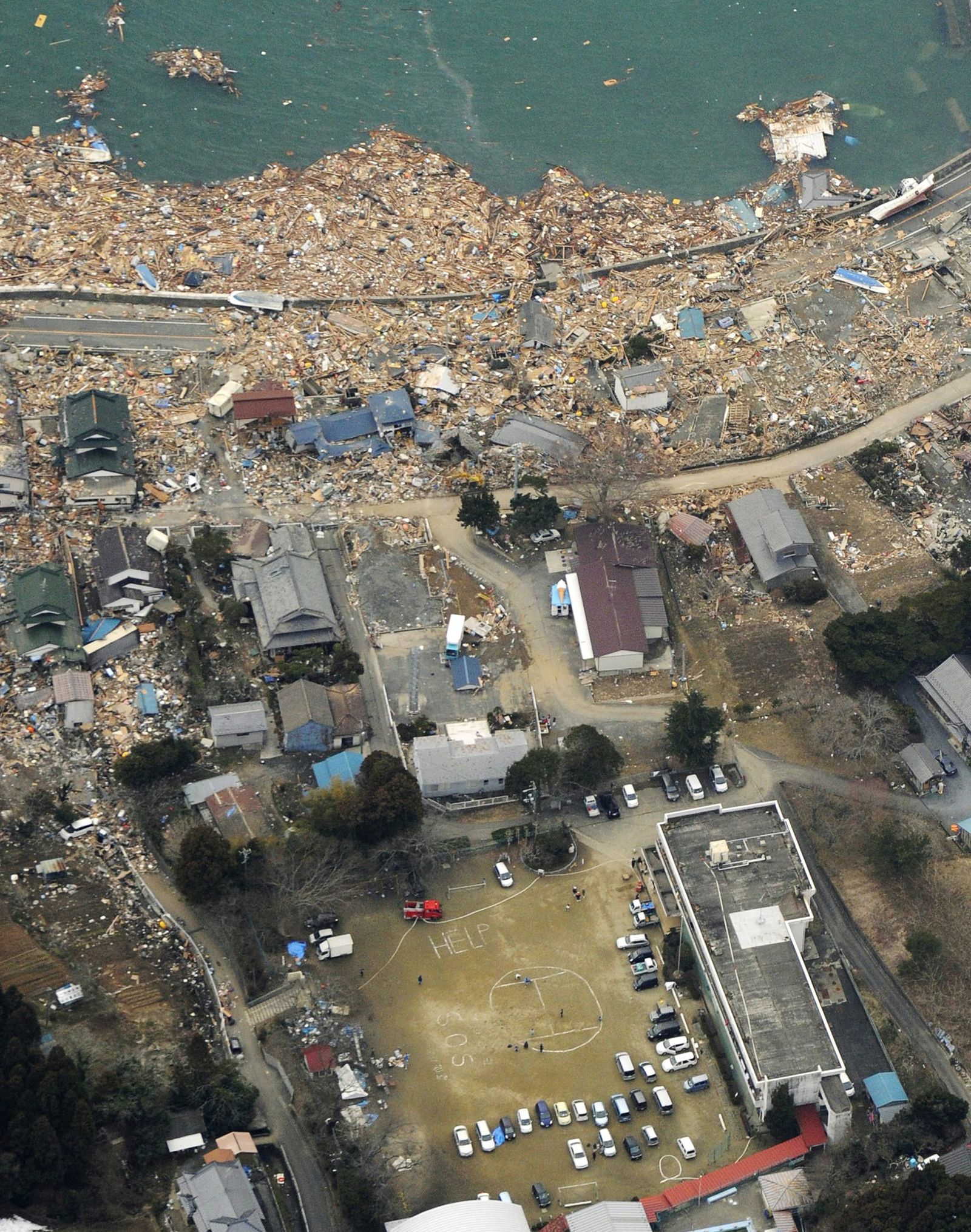
“HELP” sign is written on the ground of Ohara Primary School near a sea coast covered with the rubble in Ishinomaki, Miyagi Prefecture, northern Japan, Monday, March 14, 2011, three days after a massive earthquake and the ensuing tsunami hit Japan’s east coast.
Kyodo News Associated Press
Associated Press
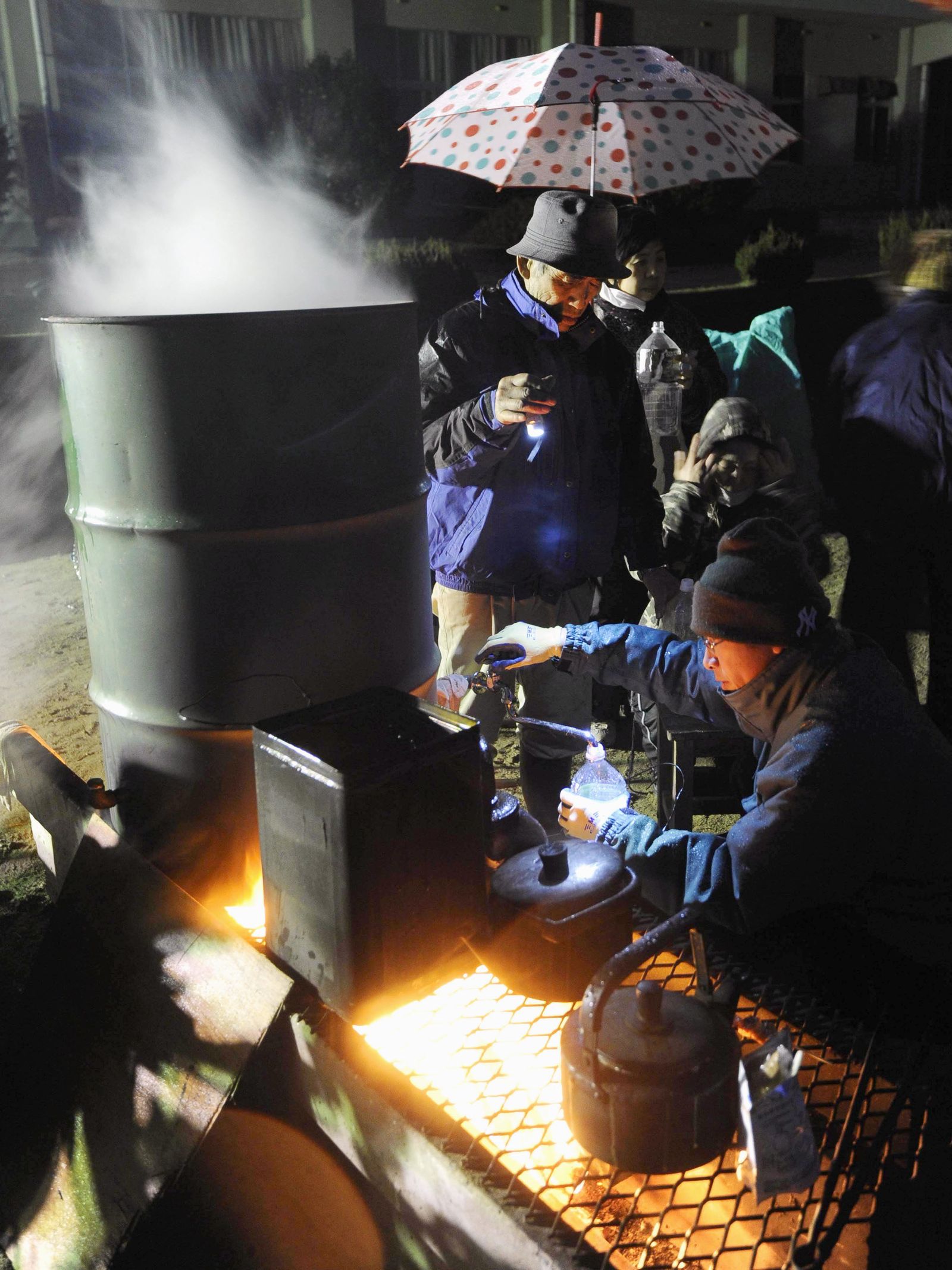
Survivors of Friday’s earthquake and tsunami make hot-water bottles at a shelter Tuesday night, March 15, 2011, in Kesennuma, Miyagi Prefecture, Japan.
Kyodo News Associated Press
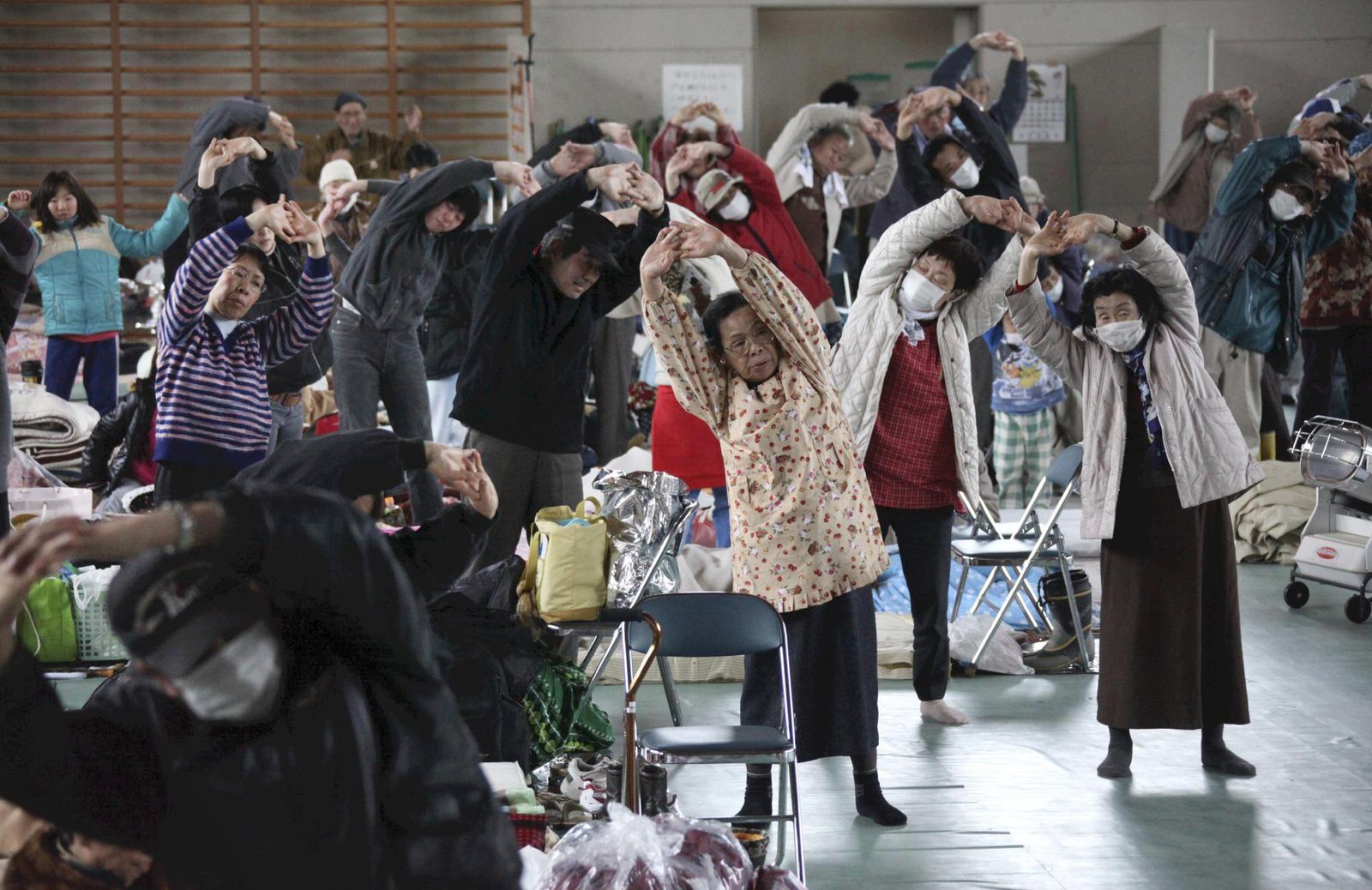
Evacuees stretch while doing exercise at a makeshift shelter in Minamisanriku, northern Japan, Tuesday, March 15, 2011, four days after a powerful earthquake-triggered tsunami hit the country’s east coast.
The Yomiuri Shimbun, Tsuyoshi Matsumoto Associated Press
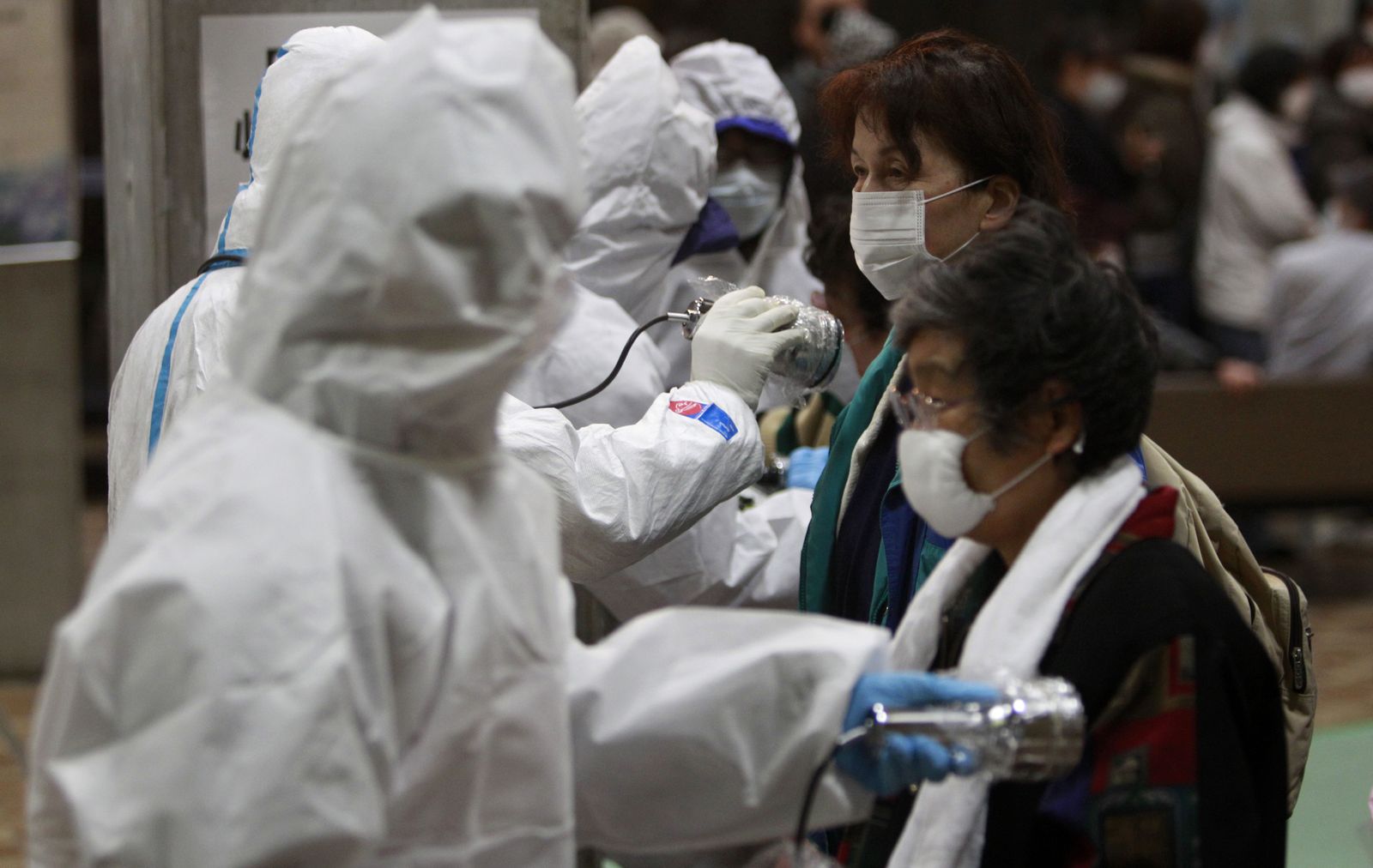
Evacuees are screened for radiation contamination at a testing center Tuesday, March 15, 2011, in Koriyama city, Fukushima Prefecture, northern Japan, four days after a massive earthquake and tsunami struck the country’s north east coast.
Wally Santana Associated Press
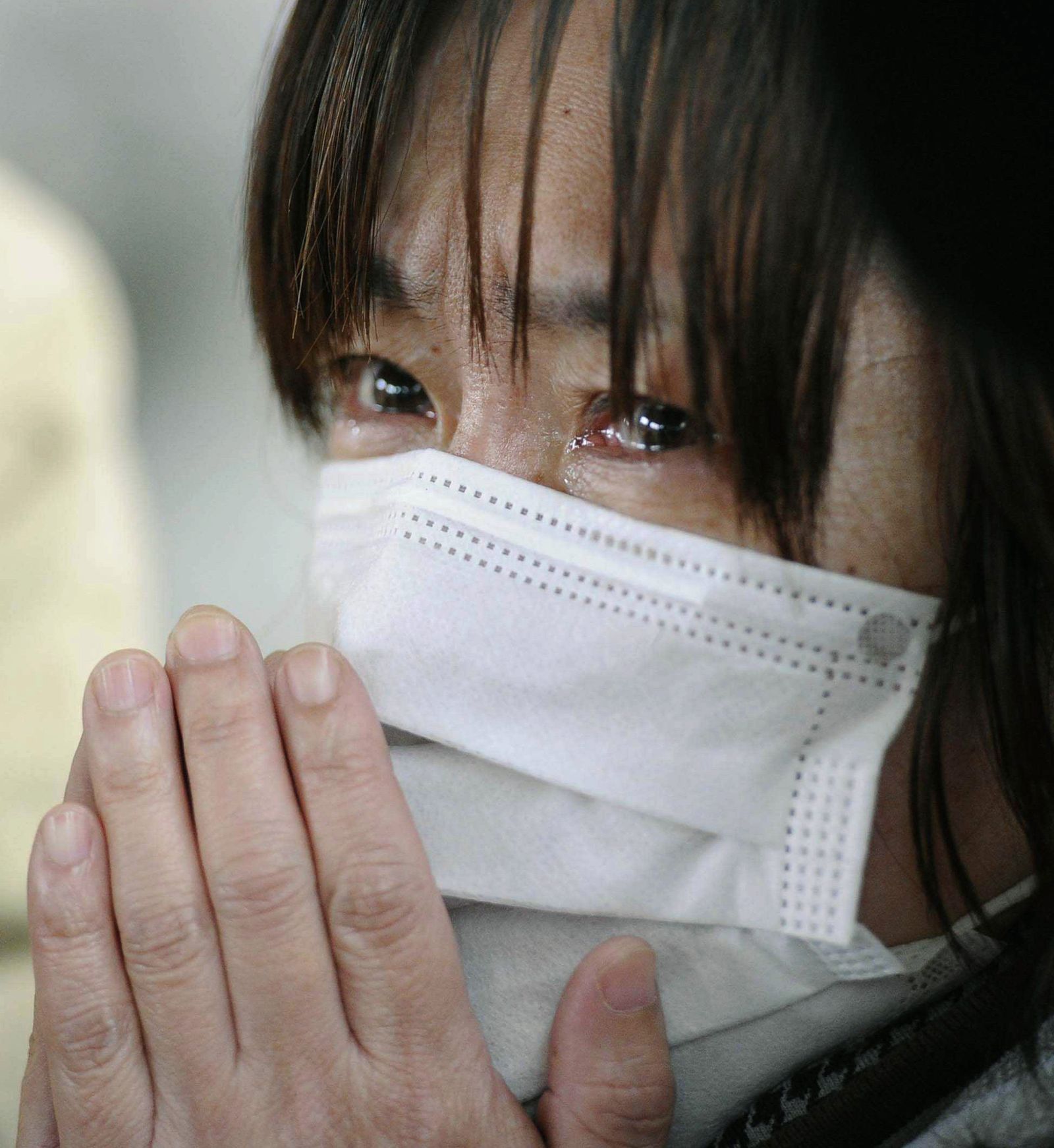
A woman reacts at the news of her relative’s death in an evacuation shelter for survivors of Friday’s earthquake and tsunami Tuesday, March 15, 2011, in Kesennuma, Miyagi Prefecture, Japan.
Kyodo News Associated Press
Associated Press
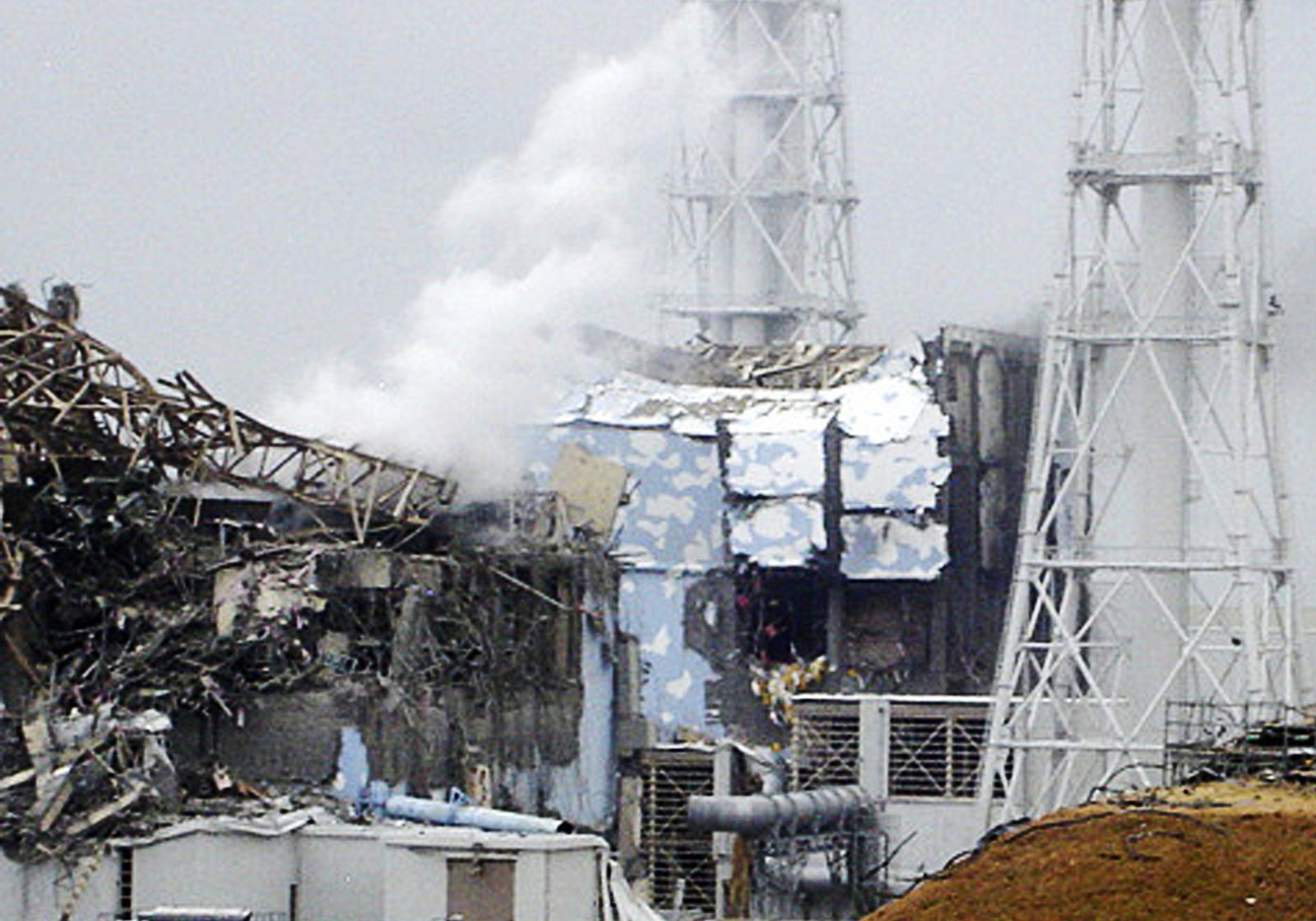
This image made available from Tokyo Electric Power Co. via Kyodo News, shows the damaged No. 4 unit of the Fukushima Dai-ichi nuclear complex in Okumamachi, northeastern Japan, on Tuesday March 15, 2011. White smoke billows from the No. 3 unit.
Tokyo Electric Power Co. via Kyodo News Associated Press
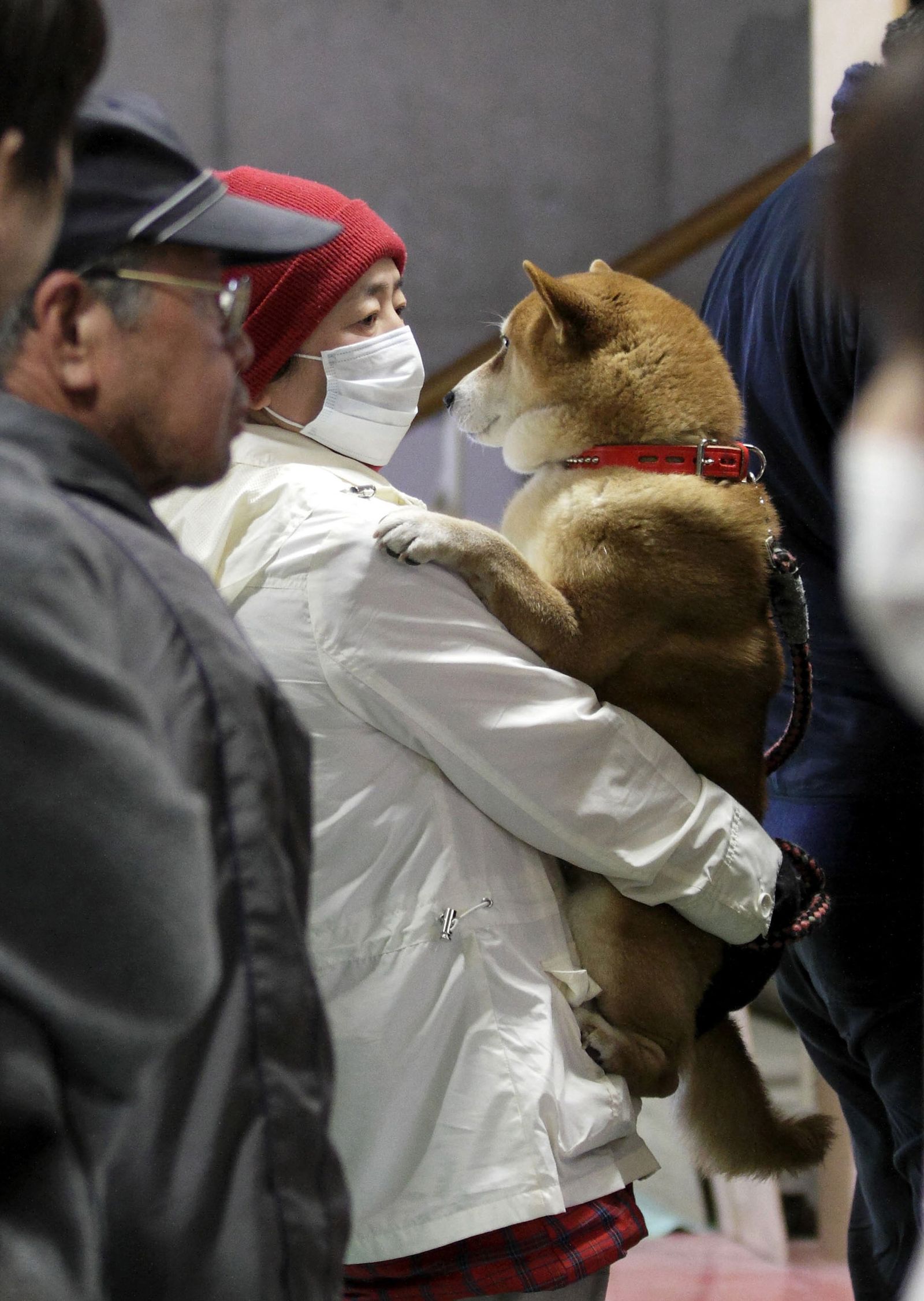
A man holds his dog as they wait to be scanned for radiation exposure at a temporary scanning center for residents living close to the quake-damaged Fukushima Dai-ichi nuclear power plant Wednesday, March 16, 2011, in Koriyama, Fukushima Prefecture, Japan.
Gregory Bull Associated Press
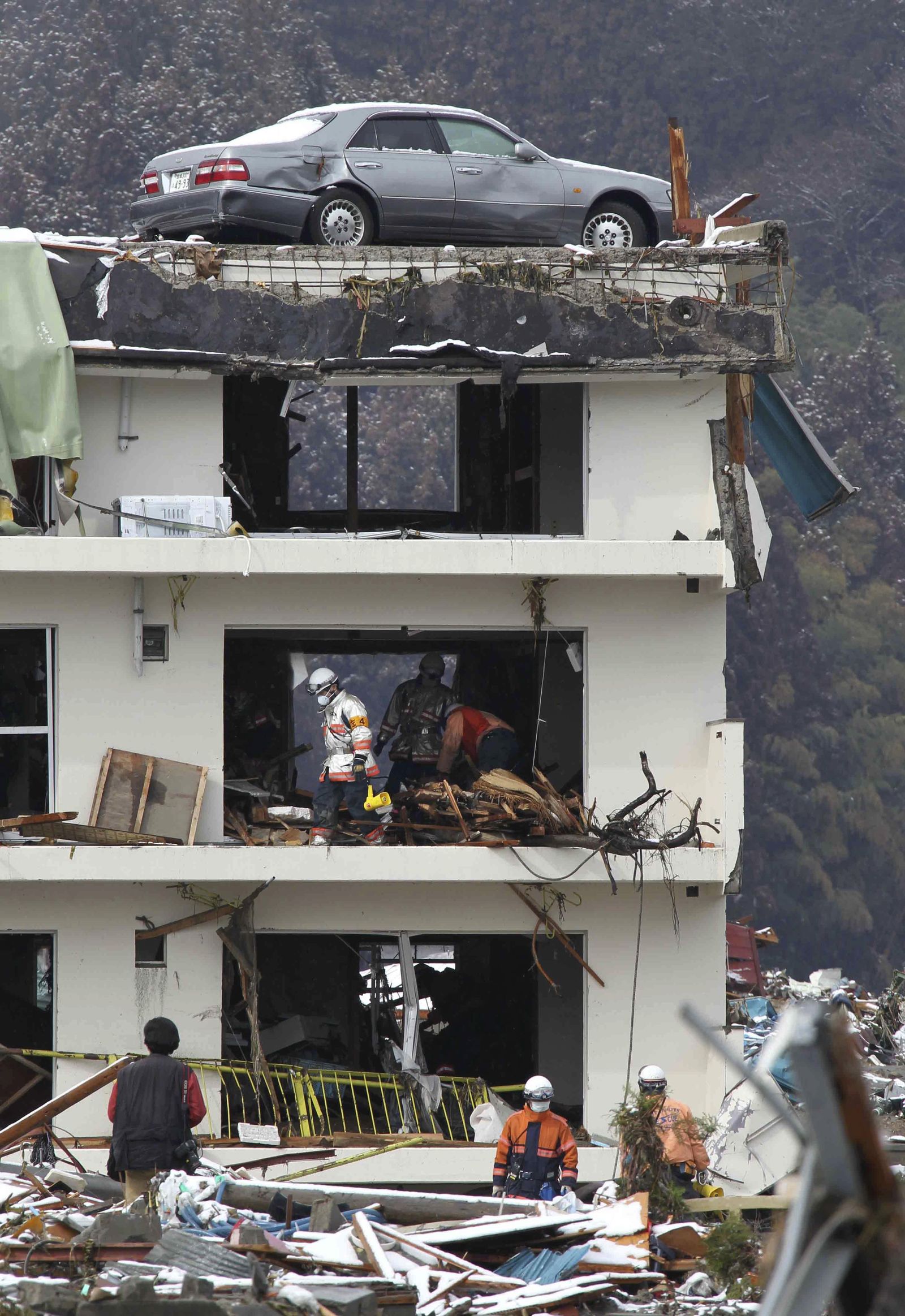
Firefighters search for missing people in Minamisanriku, northern Japan, Wednesday, March 16, 2011, after Friday’s earthquake and tsunami.
The Yomiuri Shimbun, Hiroaki Ohno Associated Press
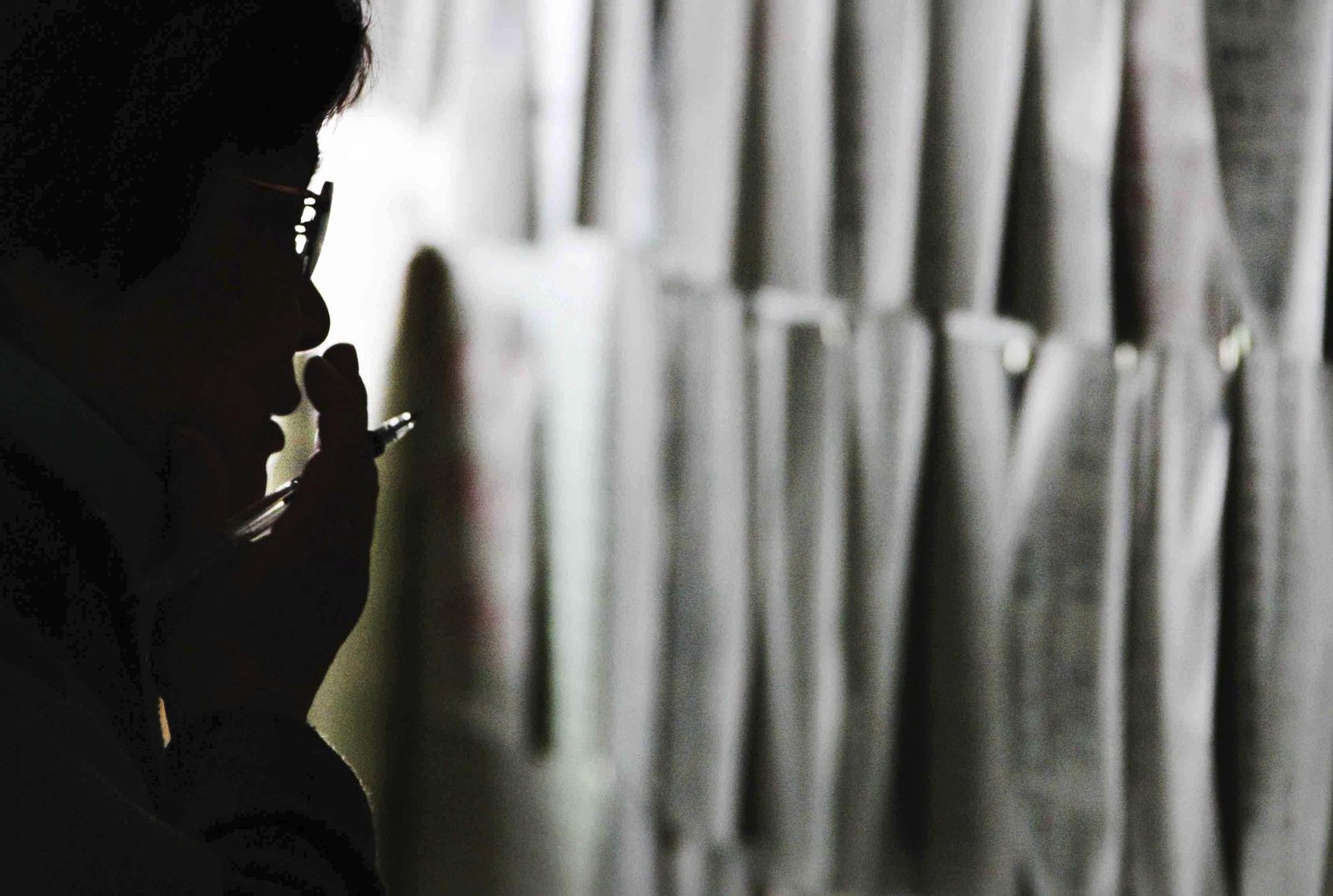
An evacuee looks for information of missing family members and friends on the notice board Wednesday, March 16, 2011 in Minamisanriku, Miyagi prefecture, where more than 10,000 among 17,000 townspeople went missing by Friday’s earthquake and tsunami.
The Yomiuri Shimbun, Hiroaki Ohno Associated Press
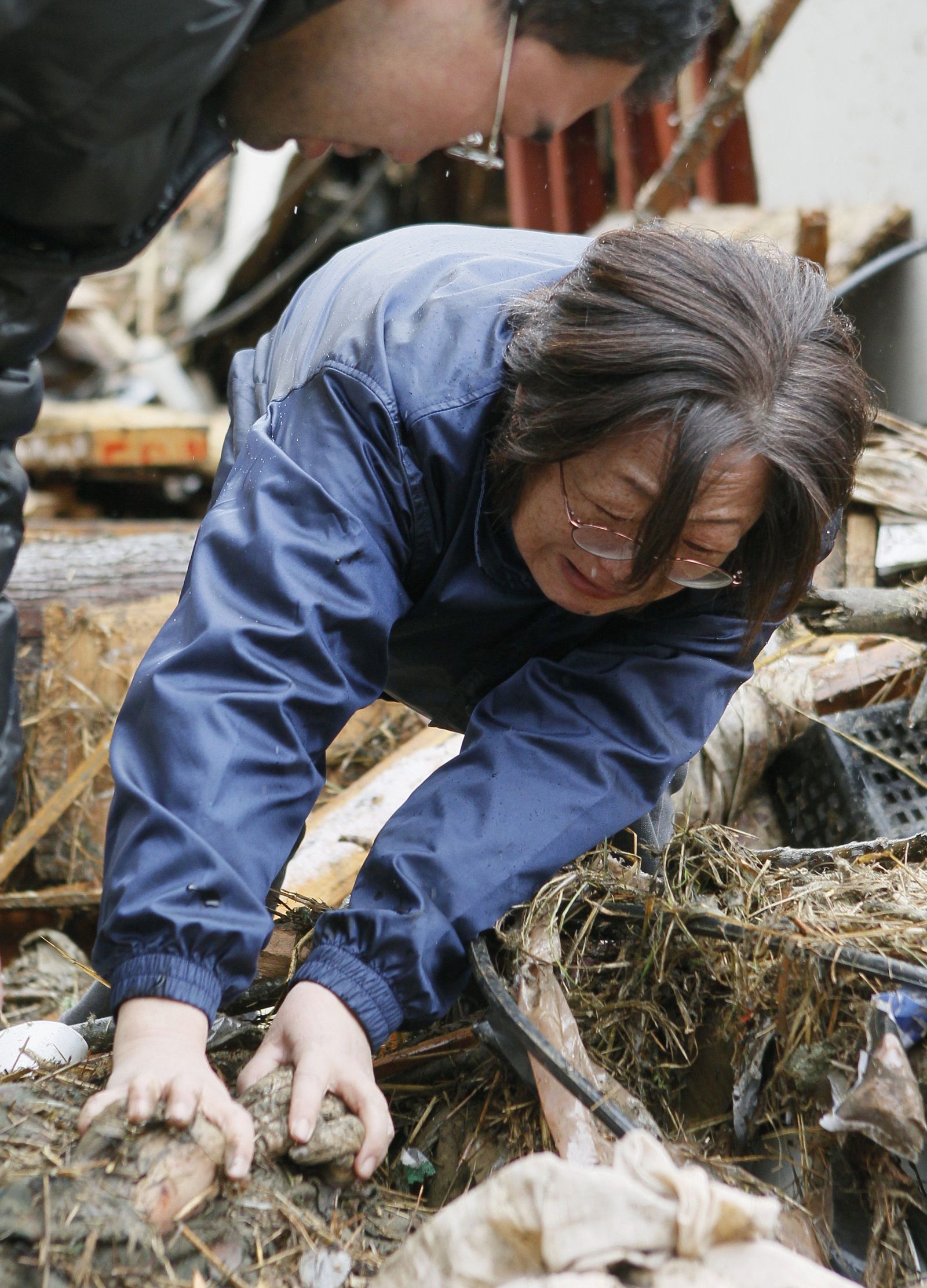
Yoshie Murakami cries as she holds a hand of her dead mother in the rubble near the spot where her home used to be Wednesday, March 16, 2011 in Rikuzentakata, Iwate Prefecture. Murakami’s 23-year-old daughter is still missing, Kyodo said.
Kyodo News Associated Press
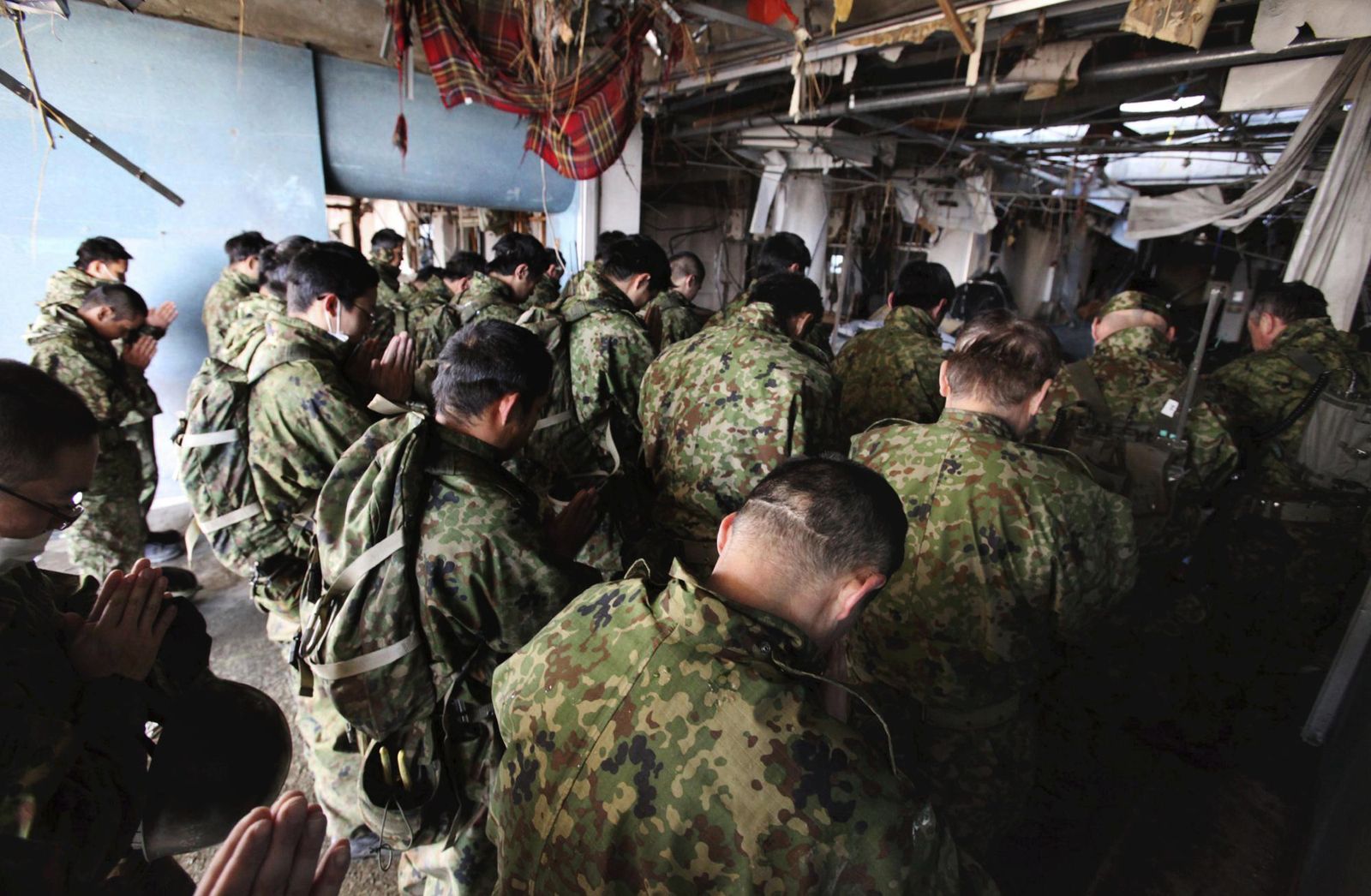
Self-Defense Force members pray for the dead in Minamisanriku, northern Japan, Wednesday, March 16, 2011, after Friday’s earthquake and tsunami.
The Yomiuri Shimbun, Tsuyoshi Matsumoto Associated Press
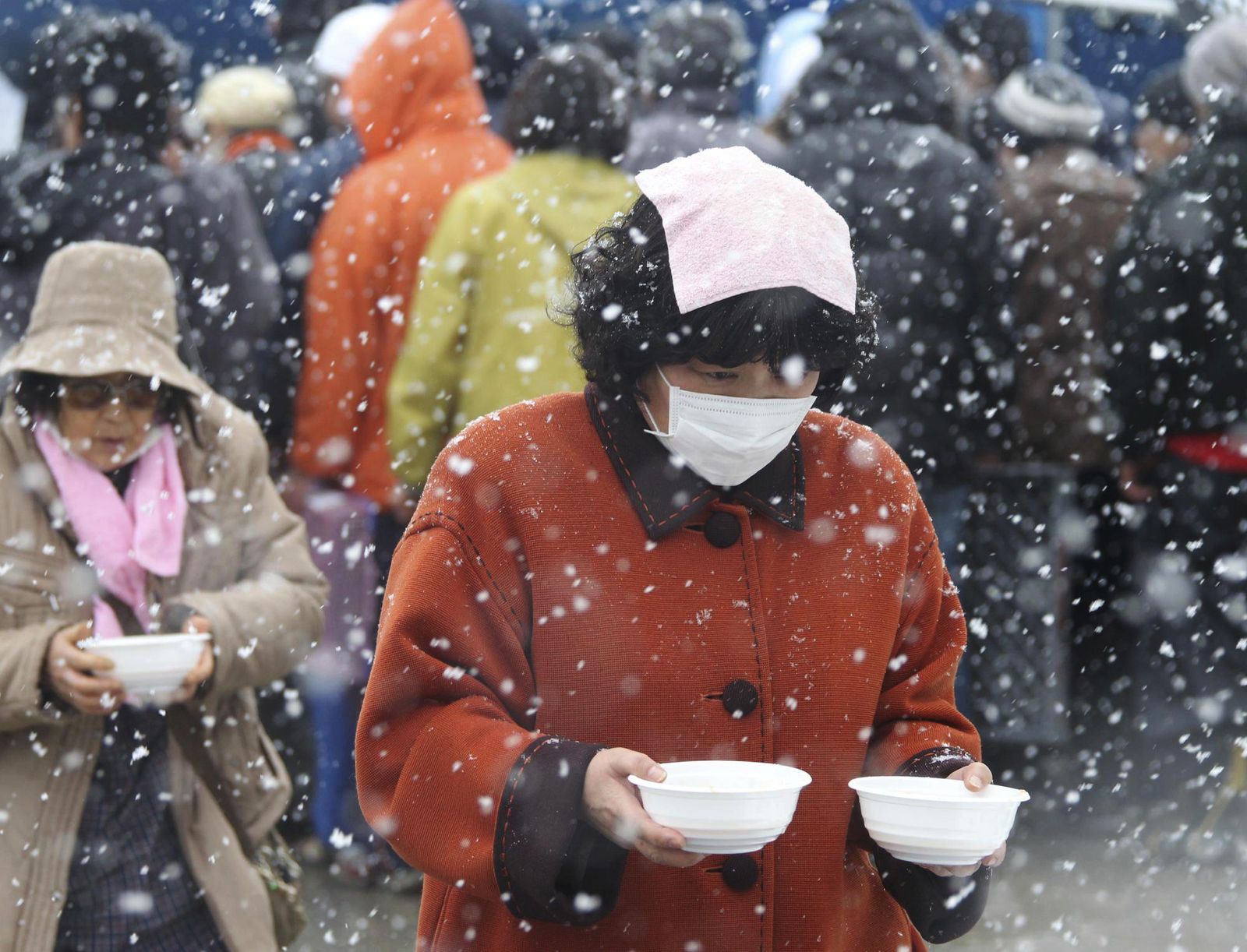
Evacuees carry bowls of pork soup from a soup kitchen back to their makeshift shelter in Minamisanriku, northern Japan, Wednesday, March 16, 2011, after Friday’s earthquake and tsunami. (AP Photo/The Yomiuri Shimbun, Tsuyoshi Matsumoto)
The Yomiuri Shimbun, Tsuyoshi Matsumoto Associated Press
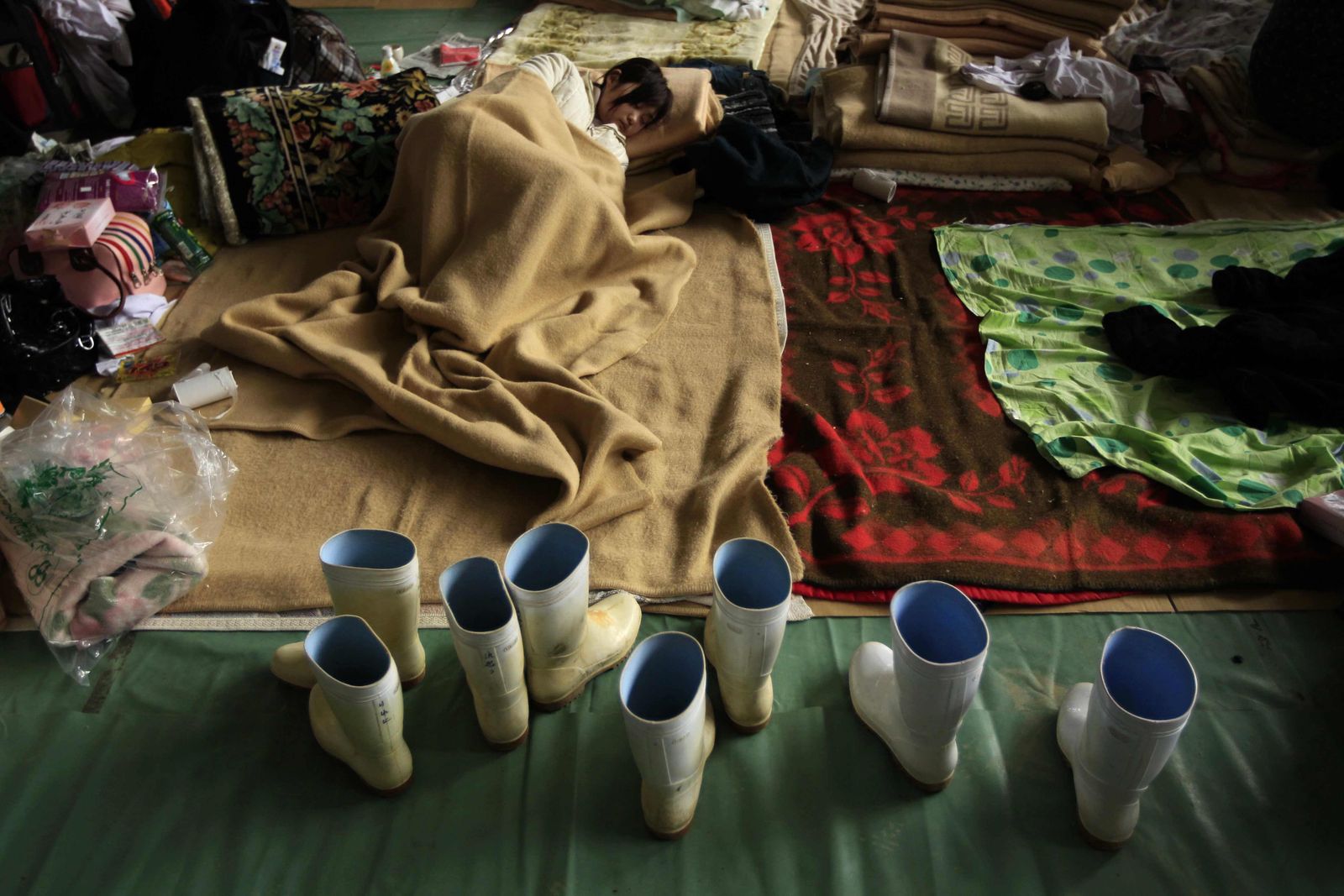
A youngster rests in a school gymnasium being used as a center for people to stay at whose homes were damaged by the tsunami in Ofunato, Japan, Wednesday, March 16, 2011. Two search and rescue teams from the U.S. and a team from the U.K. with combined numbers of around 220 personnel searched the town for survivors Wednesday to help in the aftermath of the earthquake and tsunami.
Matt Dunham Associated Press
Associated Press
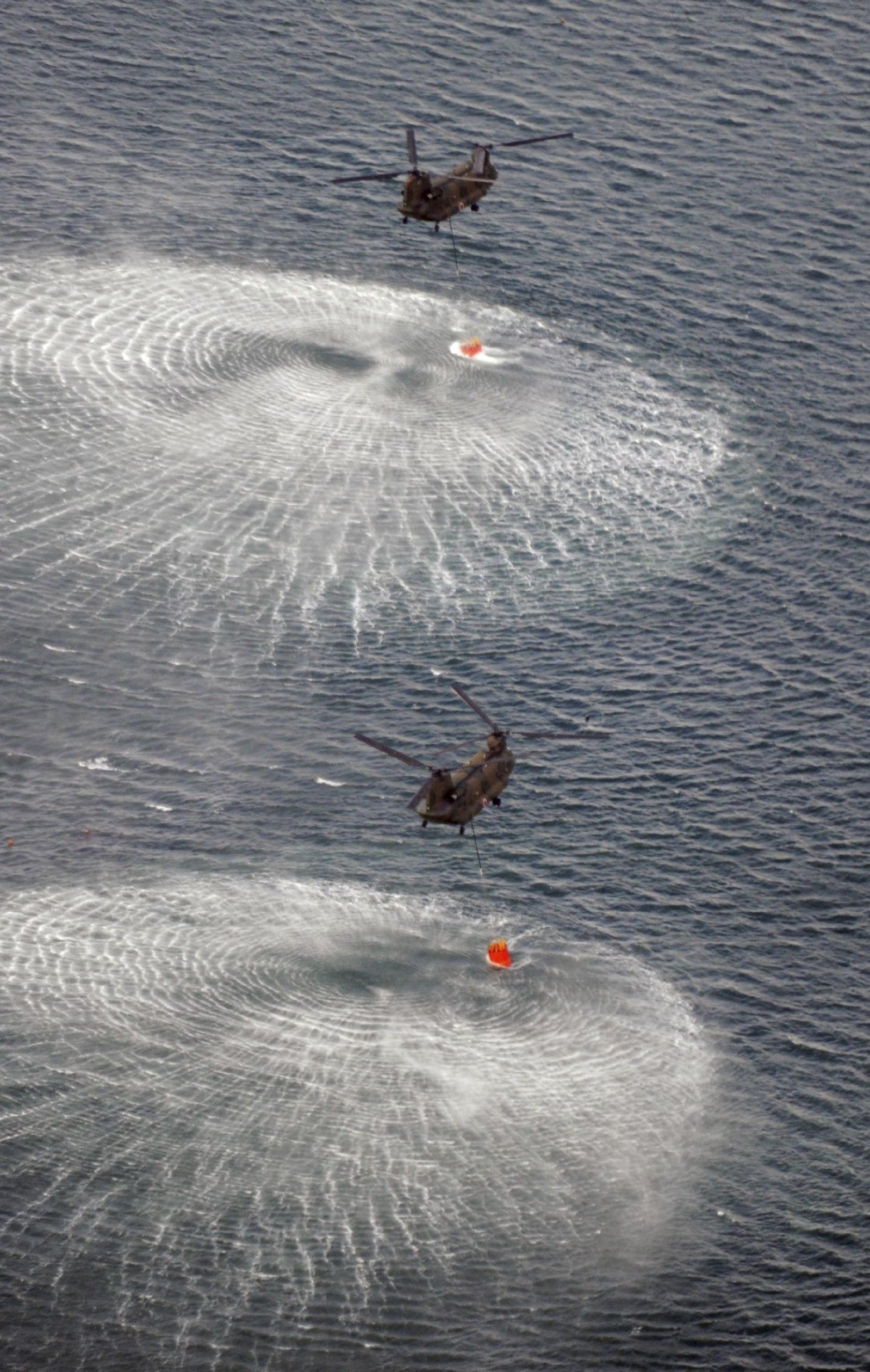
Japan’s Self-Defense Forces’s helicopters scoop water off Japan’s northeast coast on their way to the Fukushima Dai-ichi nuclear power plant in Okumamachi Thursday morning, March 17, 2011. Helicopters are dumping water on a stricken reactor in northeastern Japan to cool overheated fuel rods inside the core.
Yomiuri Shimbun, Kenji Shimizu Associated Press
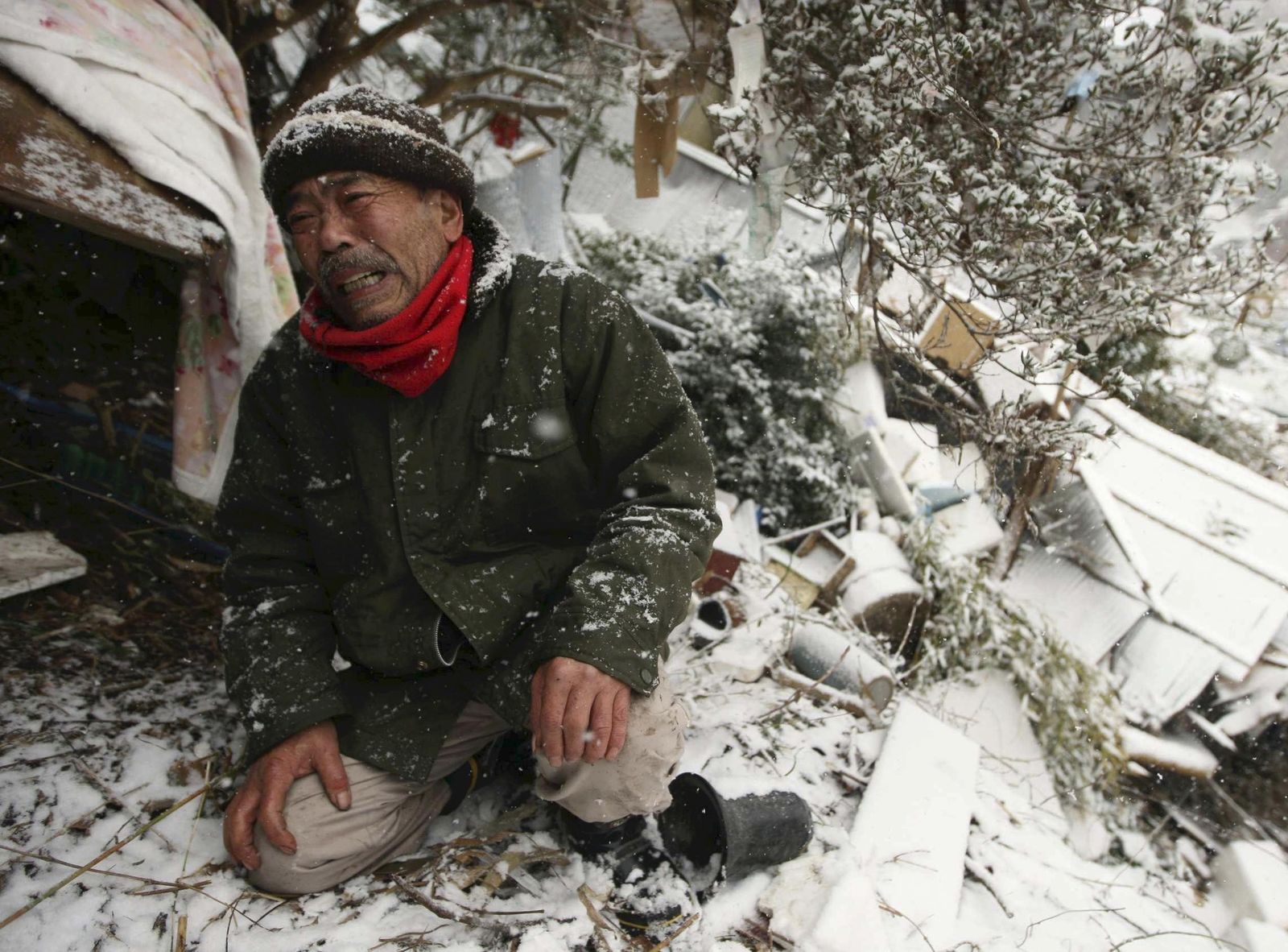
Yoshikatsu Hiratsuka grieves in front of wreckage where the body of his mother is buried in Onagawa, northern Japan Thursday, March 17, 2011. Hiratsuka kept crying out, saying “Sorry, Sorry” that he couldn’t have helped her from tsunami.
Yomiuri Shimbun, Hiroto Sekiguchi Associated Press
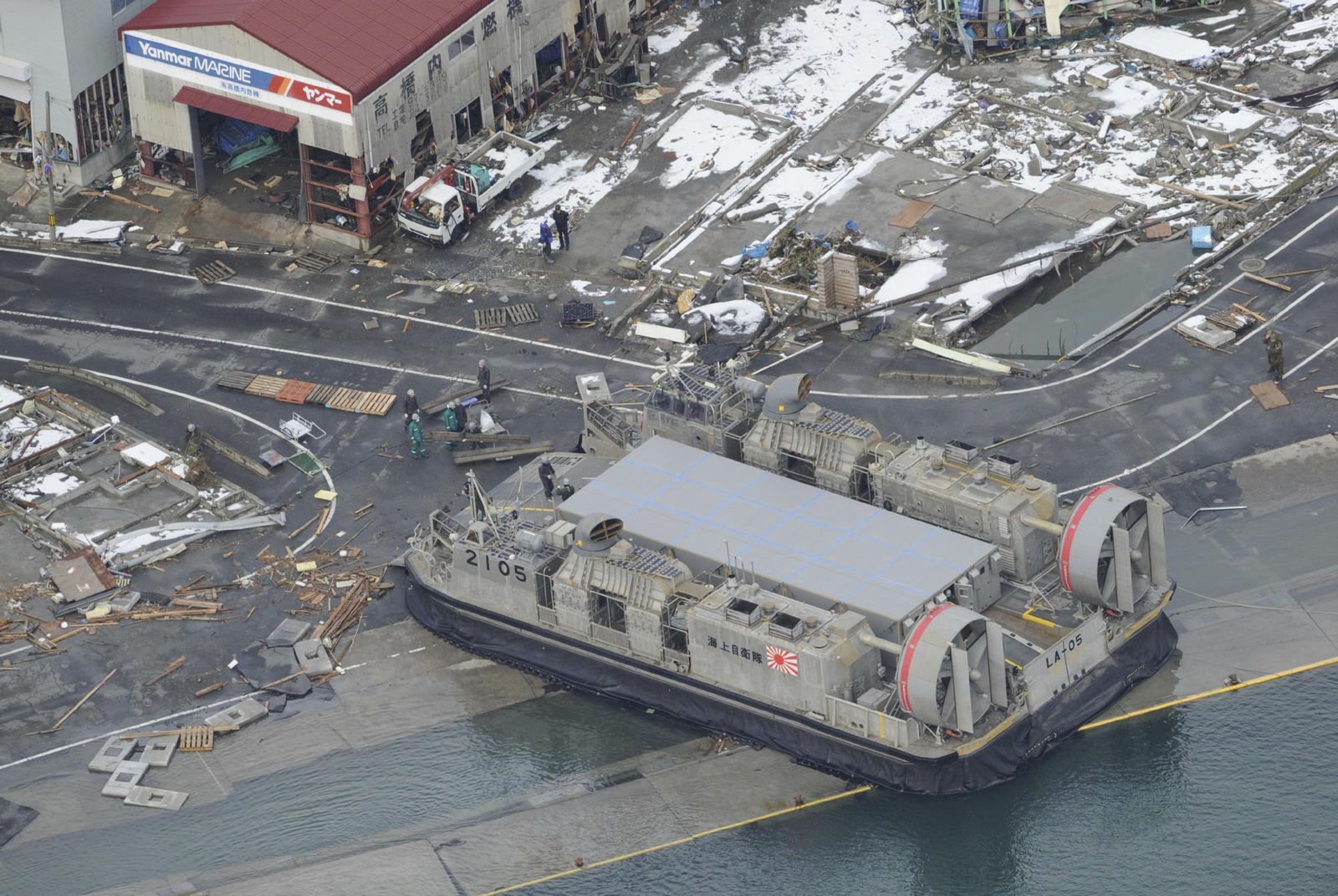
Japan’s Self-Defense Force’s hovercraft type landing craft lands with supplies in Ishinomaki, northern Japan Thursday, March 17, 2011 following Friday’s massive earthquake and tsunami.
Yomiuri Shimbun, Kenji Shimizu Associated Press
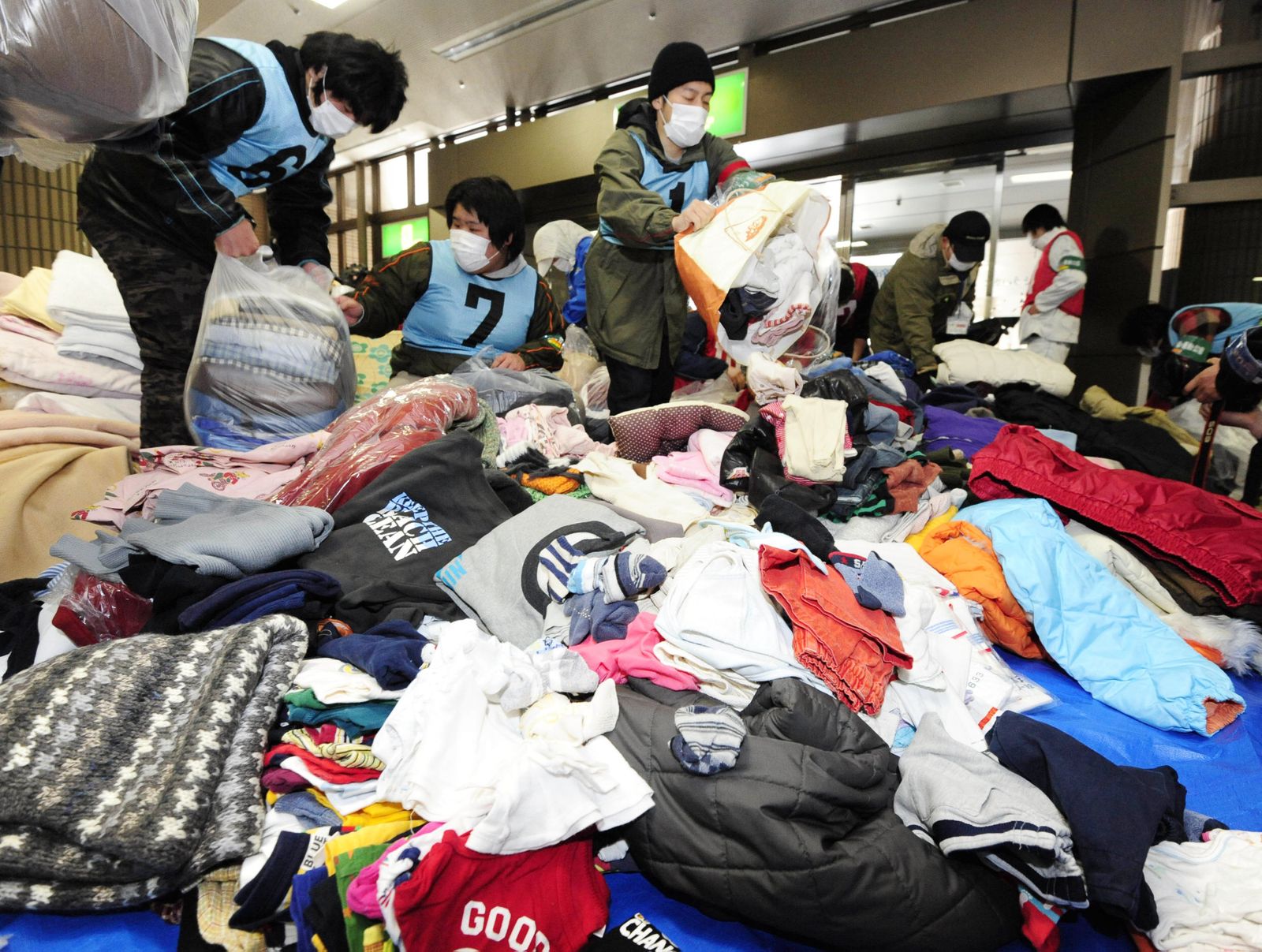
Volunteers sort out clothing that were just delivered to them prior to distribution to quake victims at Fukushima, northeastern Japan, on Thursday, March 17, 2011 following last week’s massive earthquake and resulting tsunami.
Kyodo News Associated Press
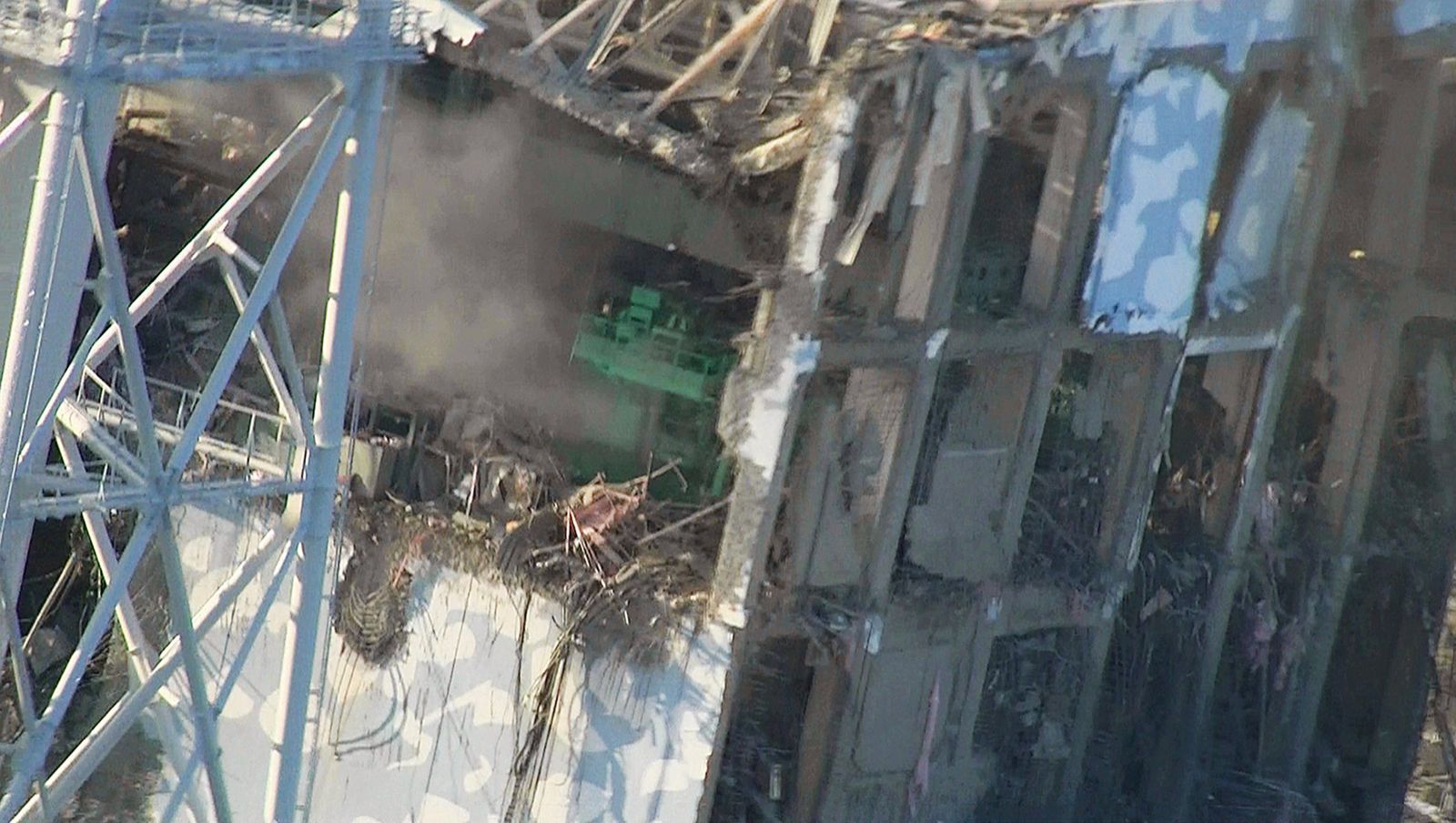
In this photo taken on Wednesday afternoon, March 16, 2011 and released on Thursday, March 17 by Tokyo Electric Power Co. (TEPCO), the top part of the badly damaged No. 4 unit of the Fukushima Dai-ichi nuclear power plant in Okumamachi, Fukushima Prefecture, is shown. A nearly completed new power line could restore cooling systems in Japan’s tsunami-crippled nuclear power plant, its operator said Thursday, raising some hope of easing the crisis that has threatened a meltdown and already spawned dangerous radiation surges.
Tokyo Electric Power Co. Associated Press
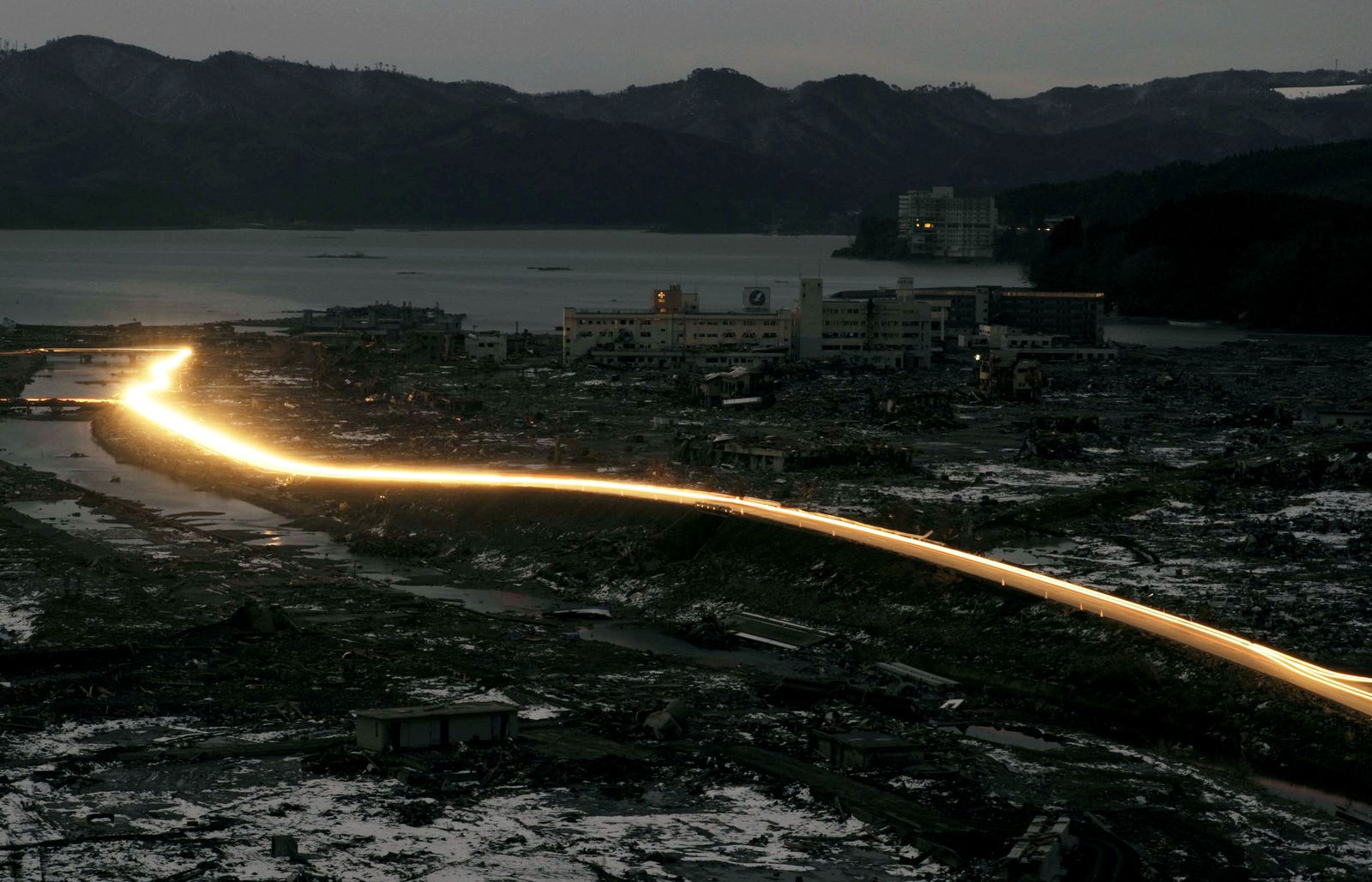
Headlights of vehicles stream along a landscape destroyed in Friday’s earthquake and tsunami in Minamisanriku town, Miyagi Prefecture, northeastern Japan, March 17, 2011.
Kyodo News Associated Press
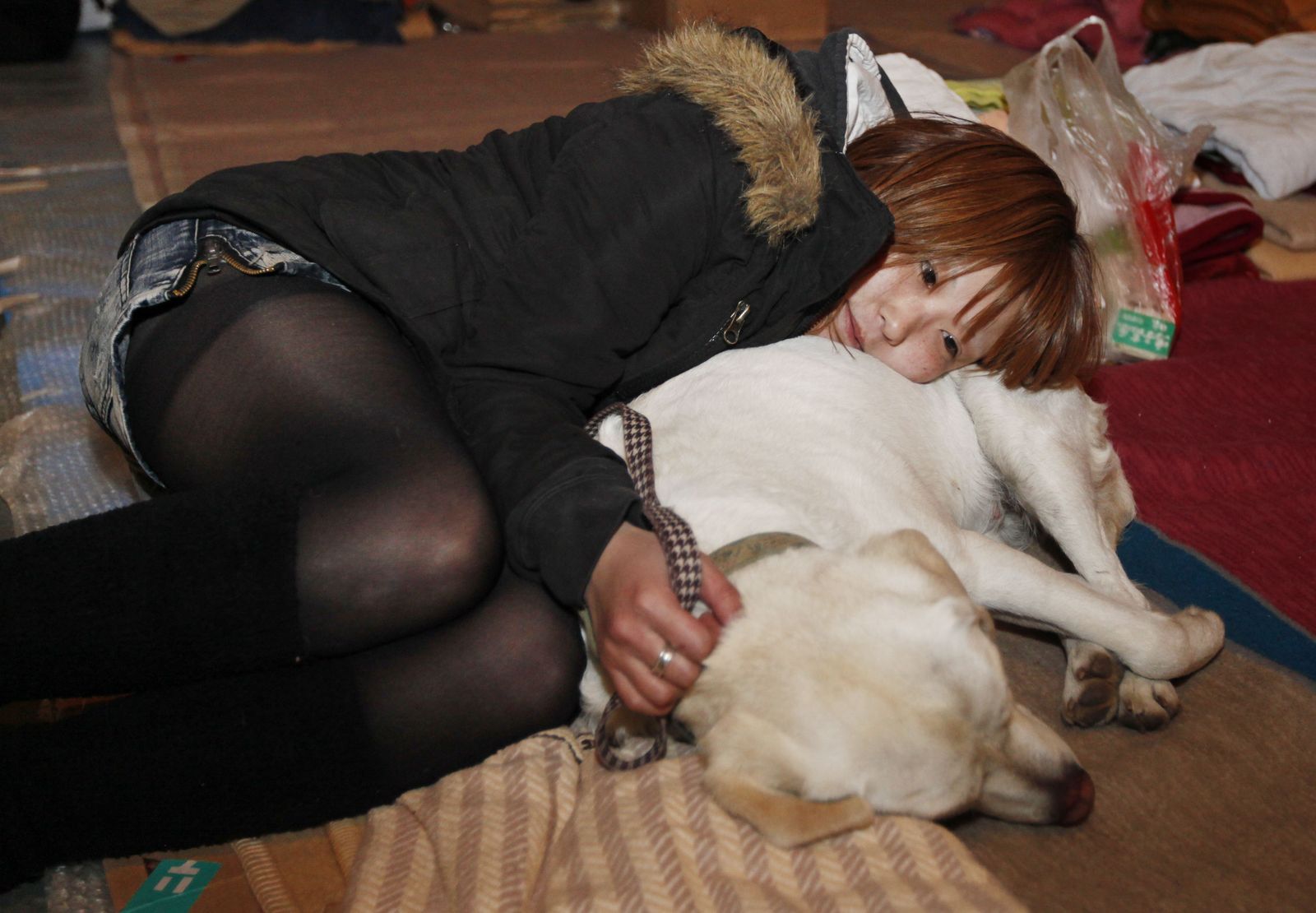
Akane Ito hugs her dog Mei at an evacuation center in Natori, near Sendai, Miyagi Prefecture, Japan, Friday, March 18, 2011. Mei was returned to her today, seven days after she went missing following the earthquake triggered tsunami on March 11.
Mark Baker Associated Press